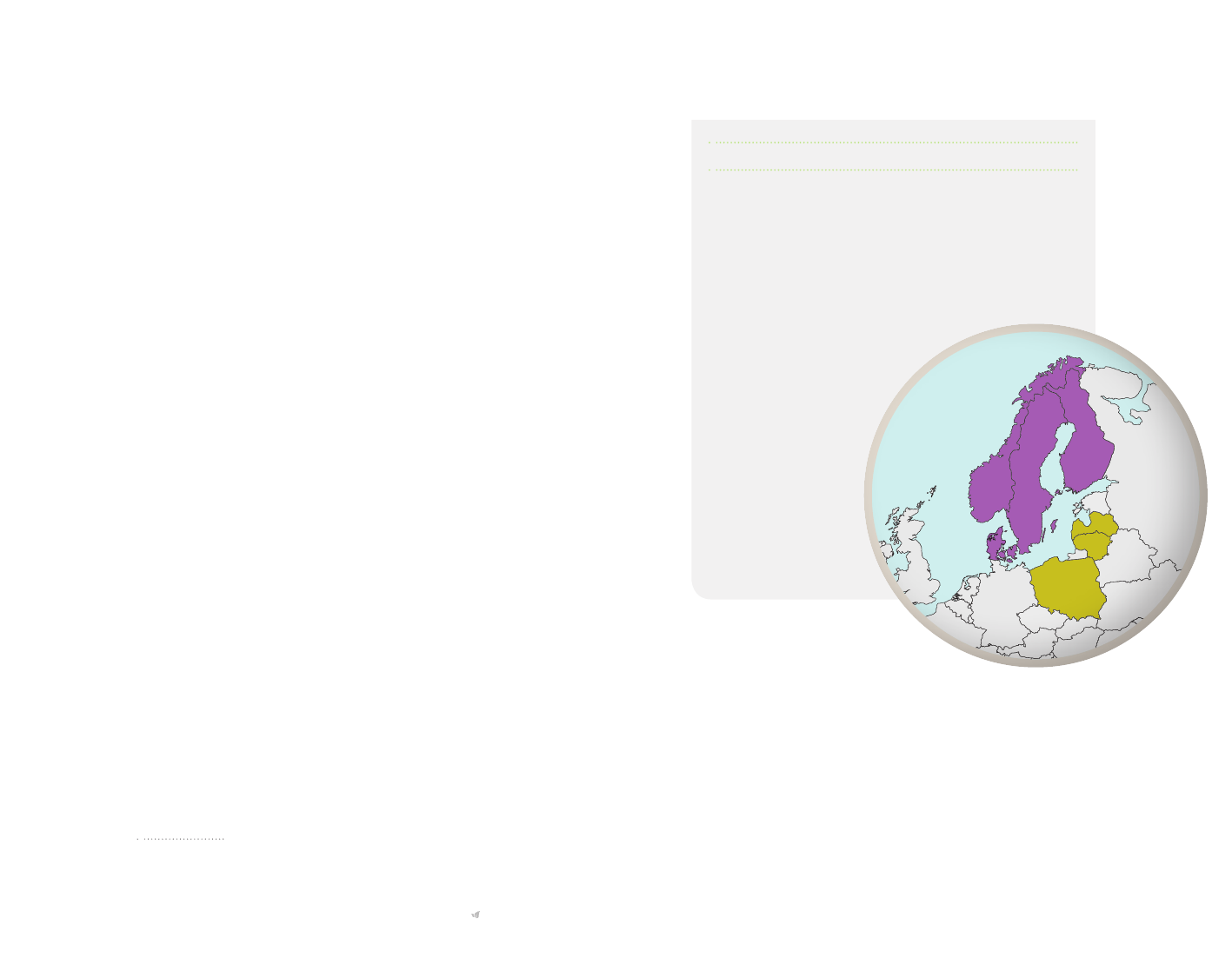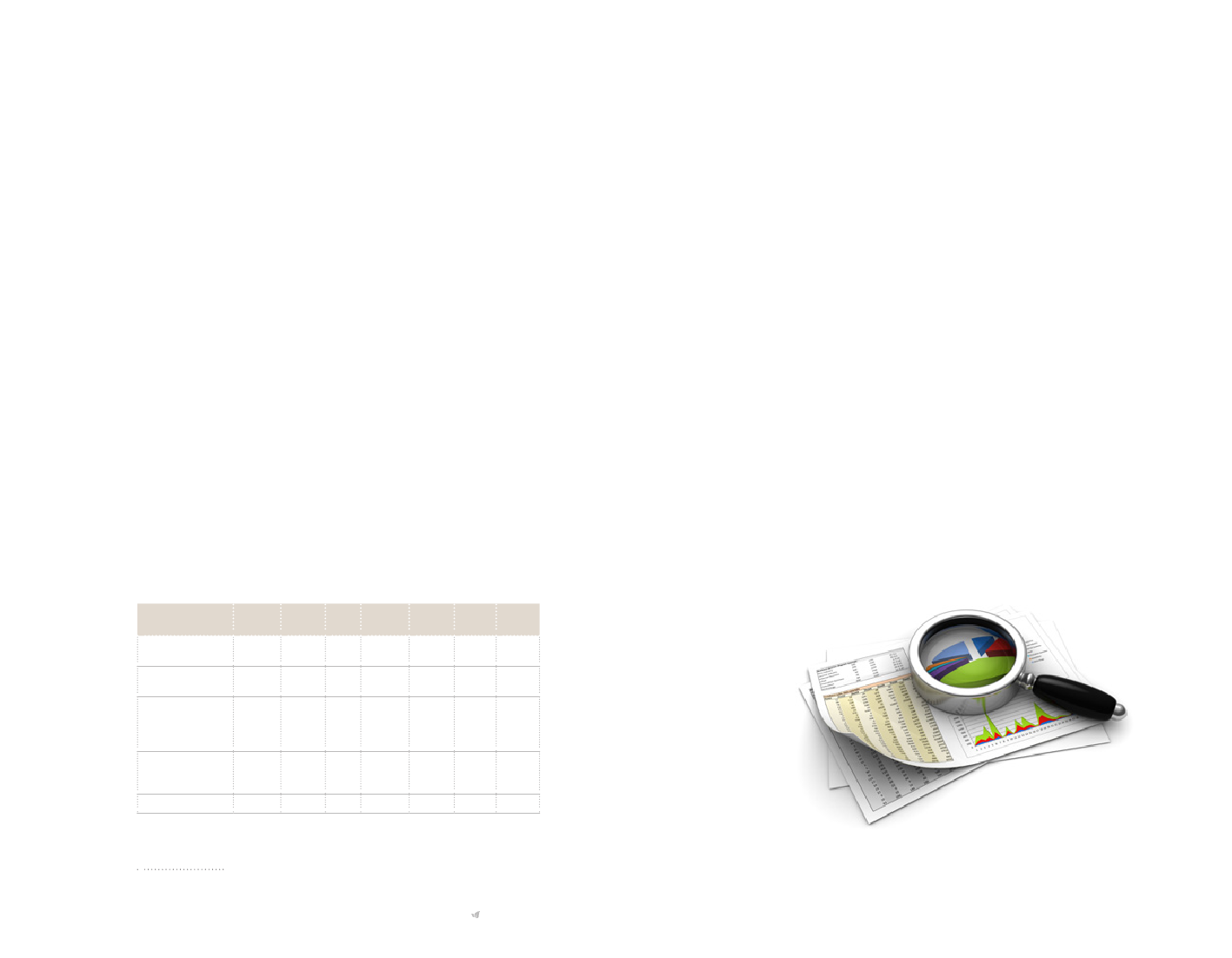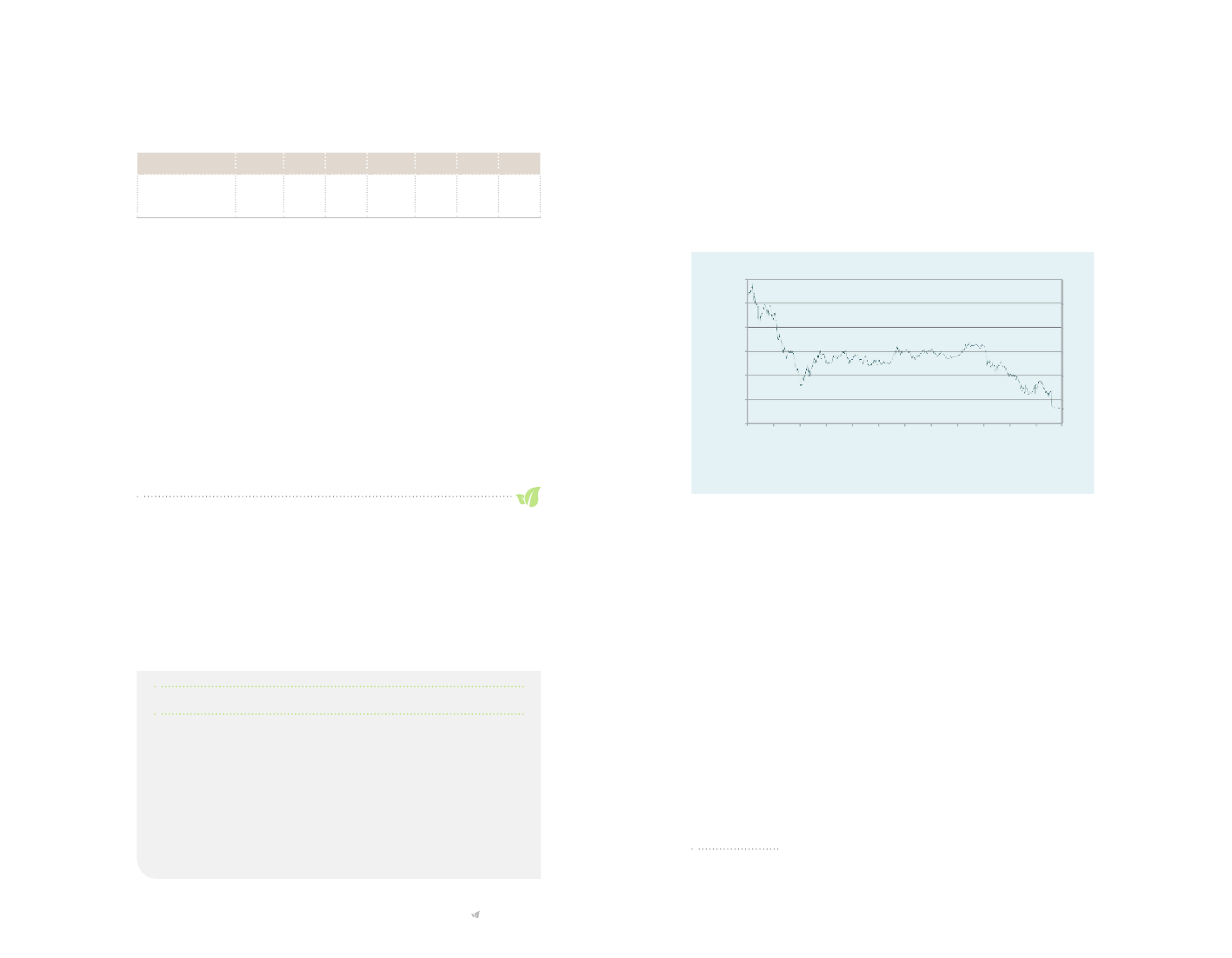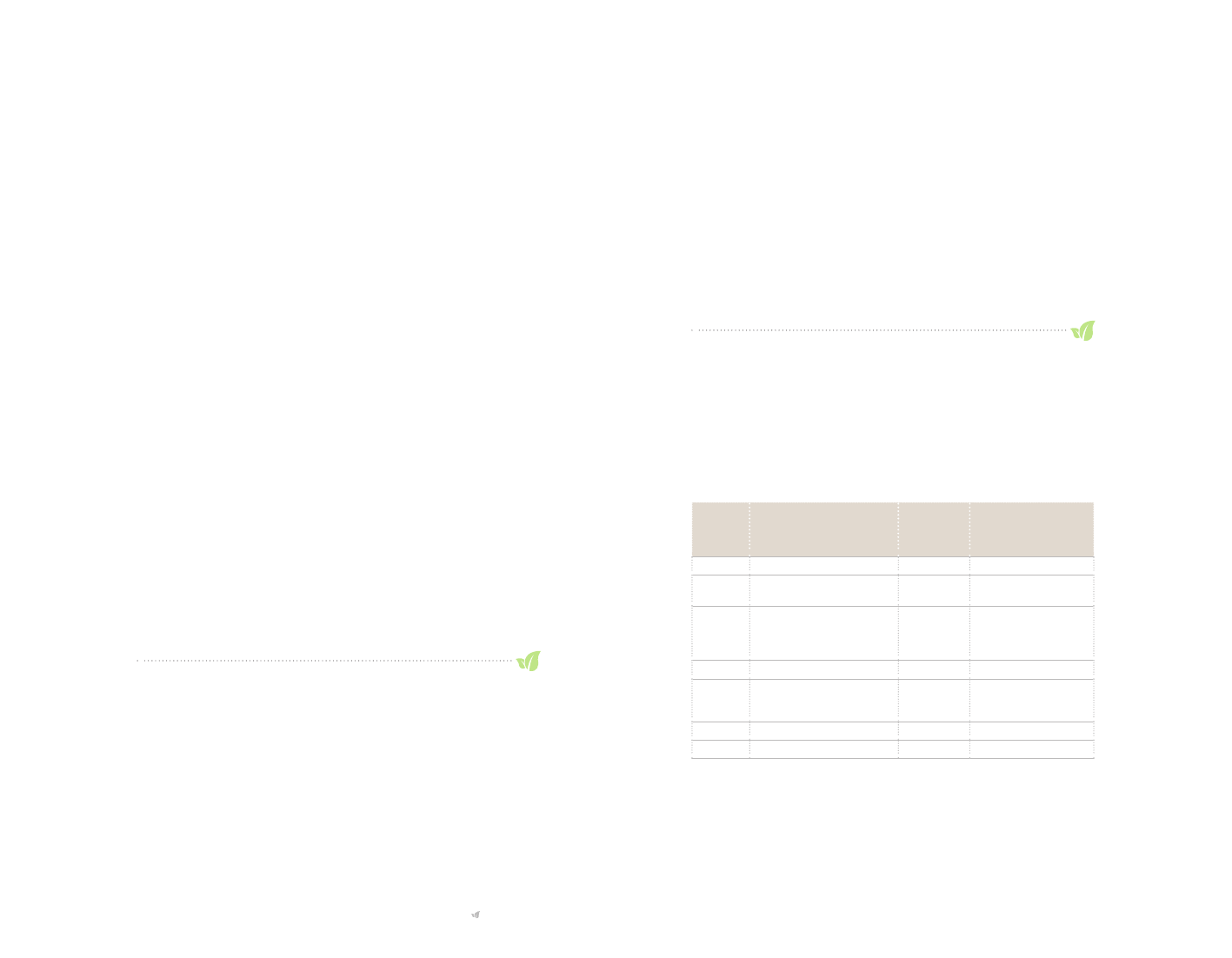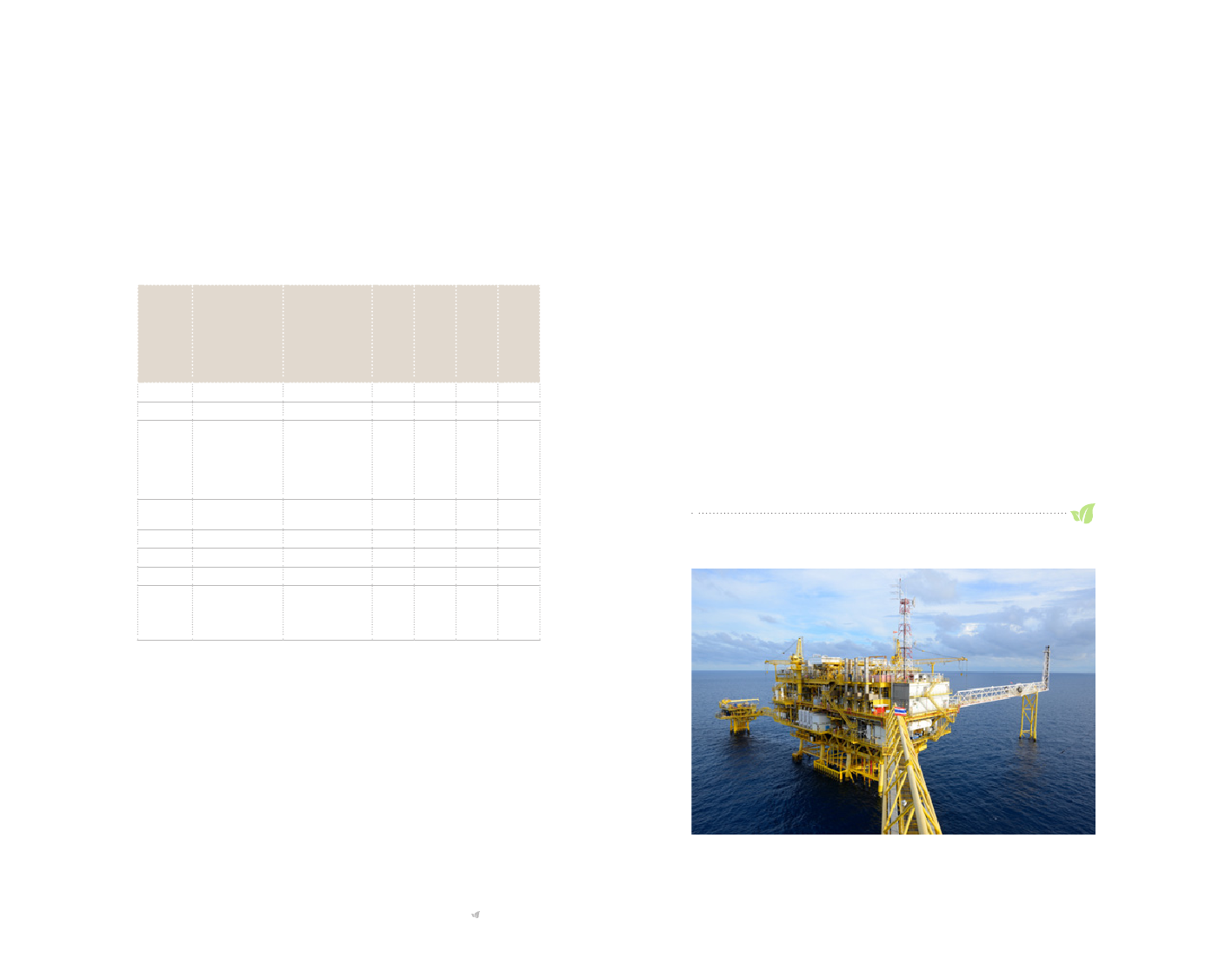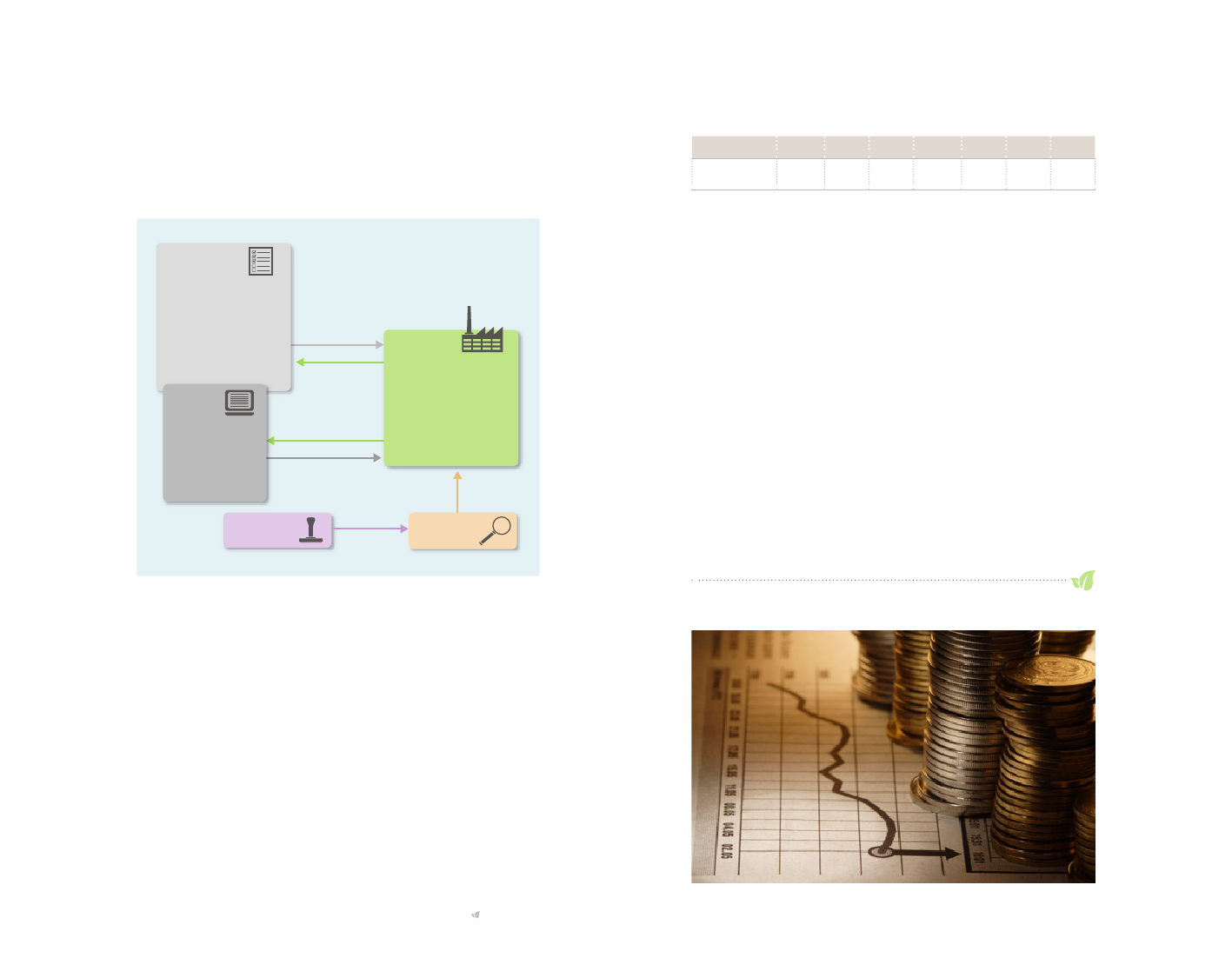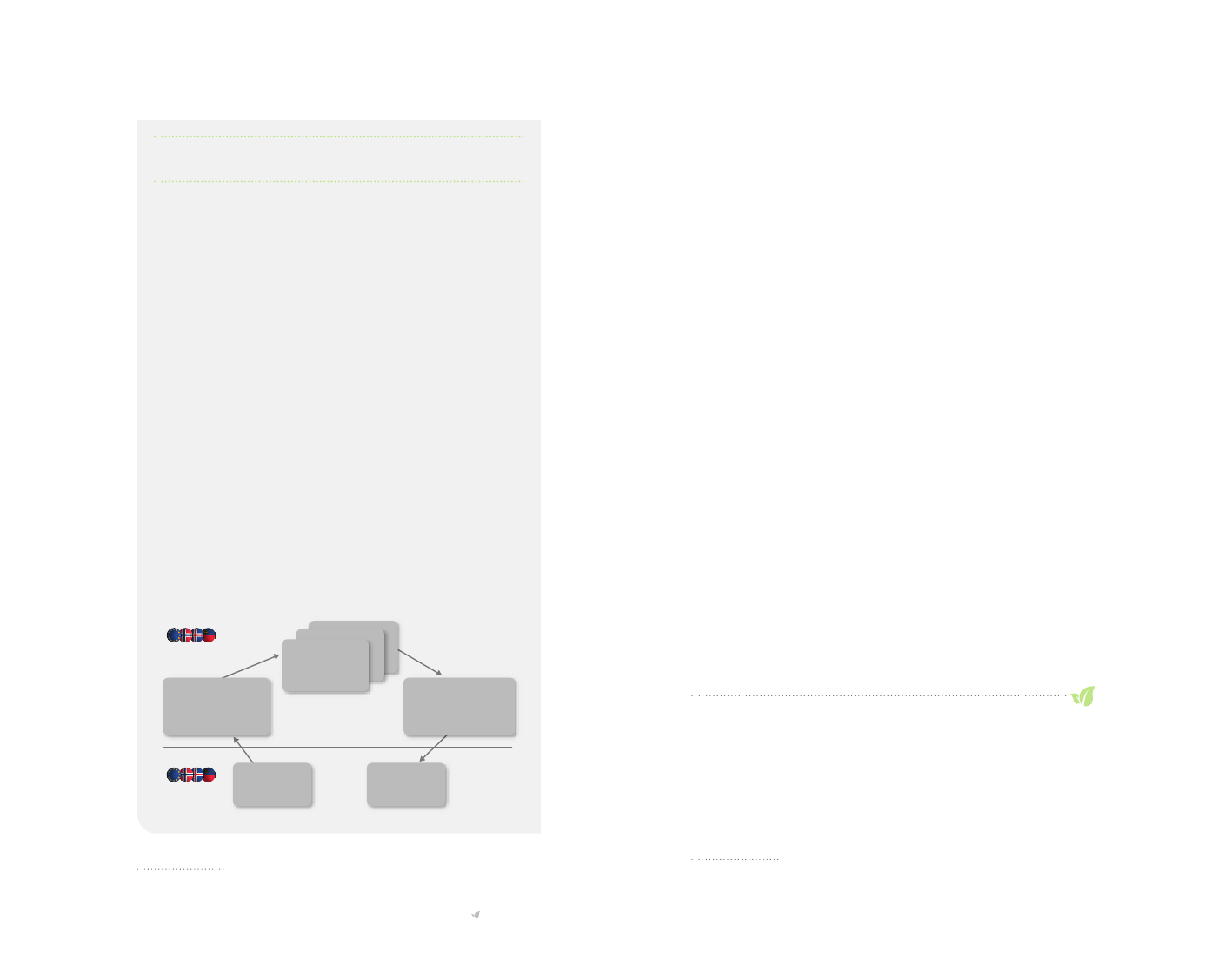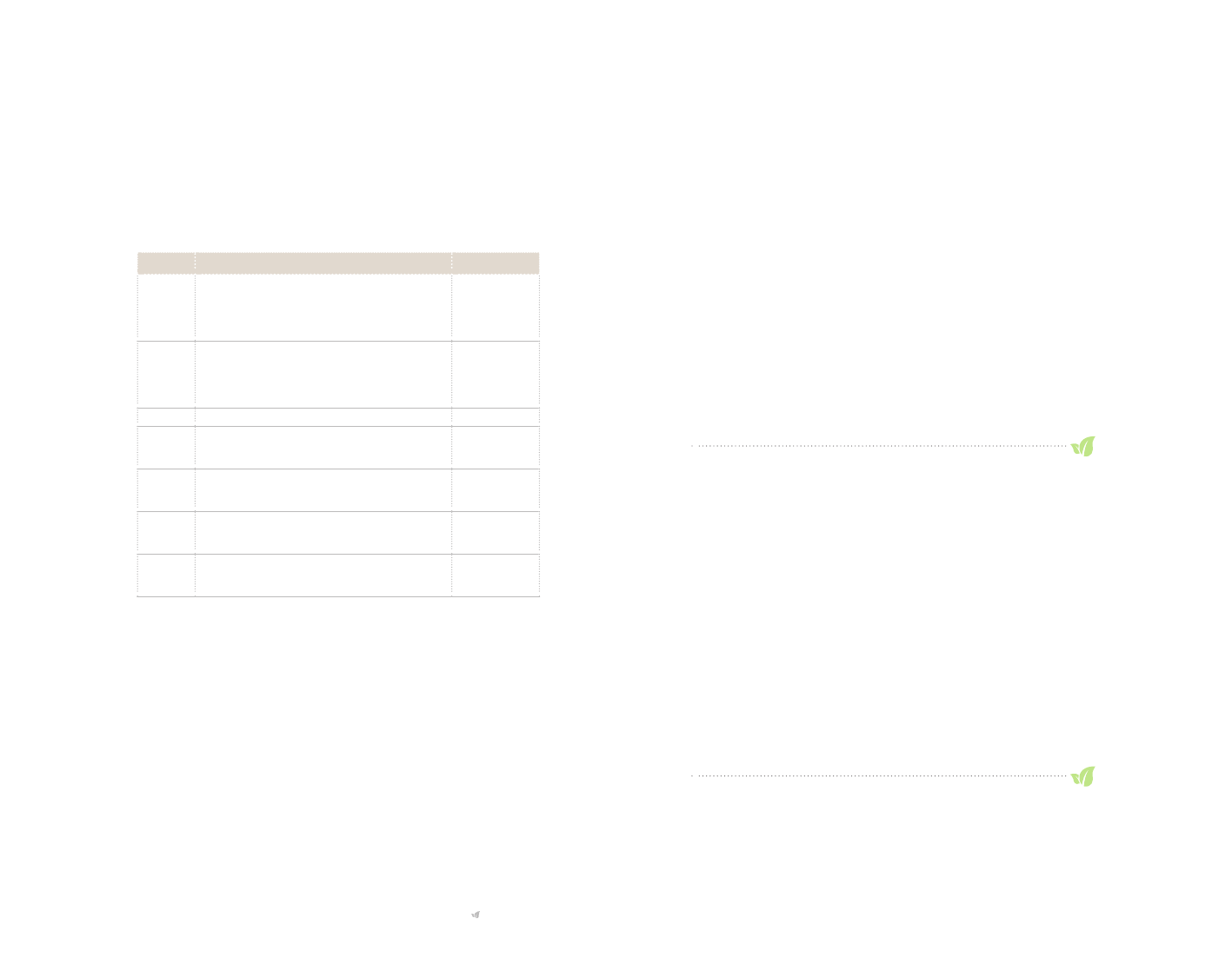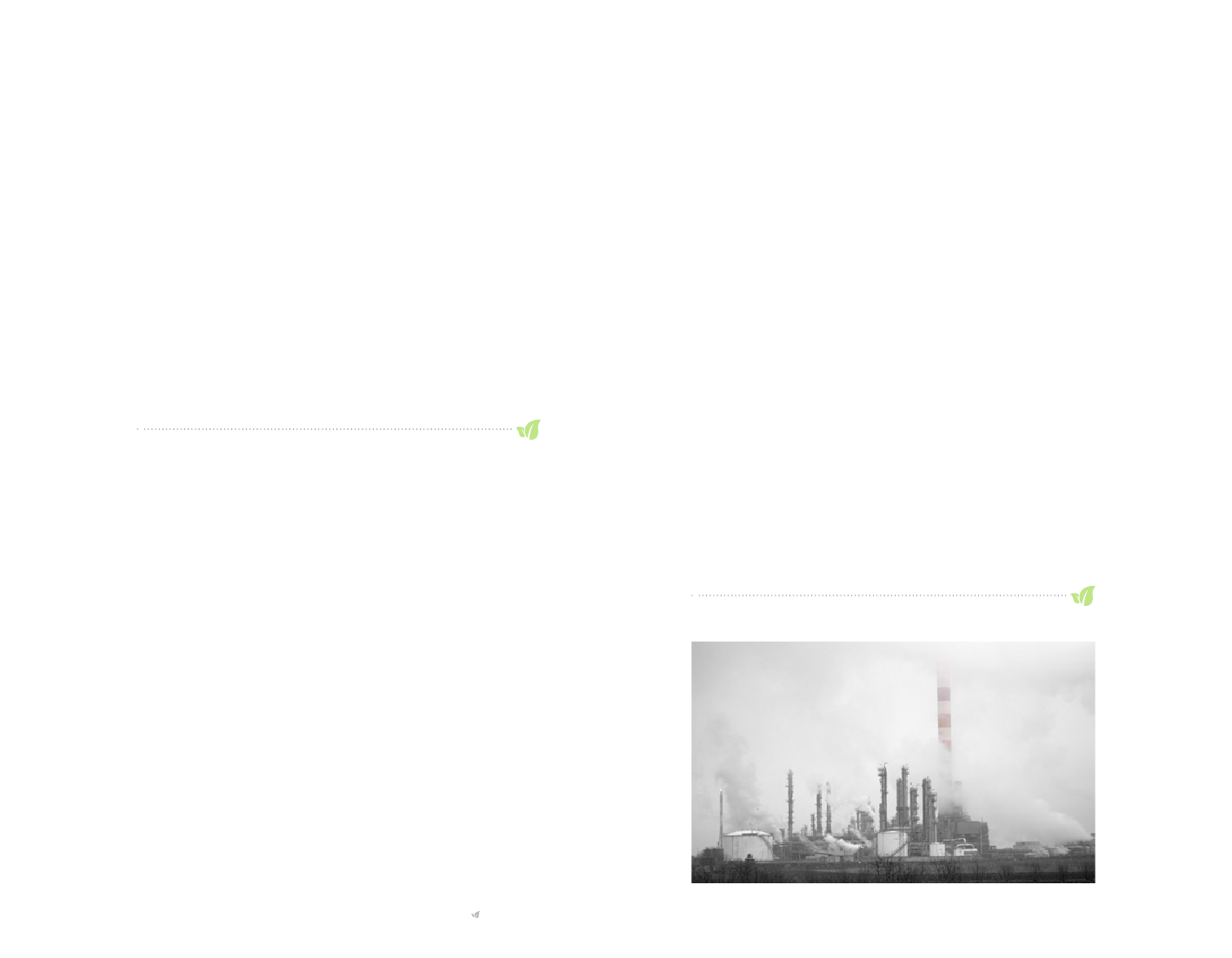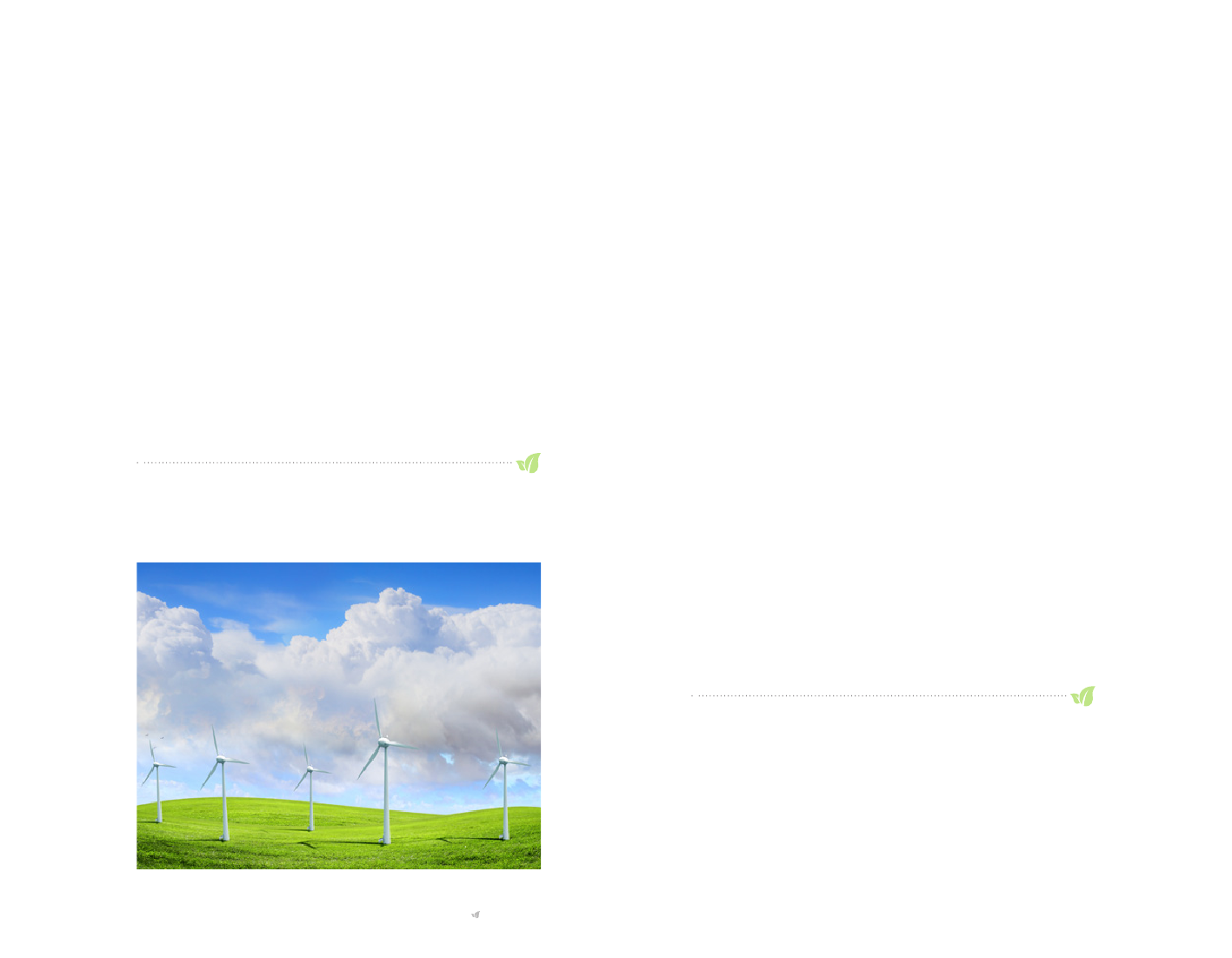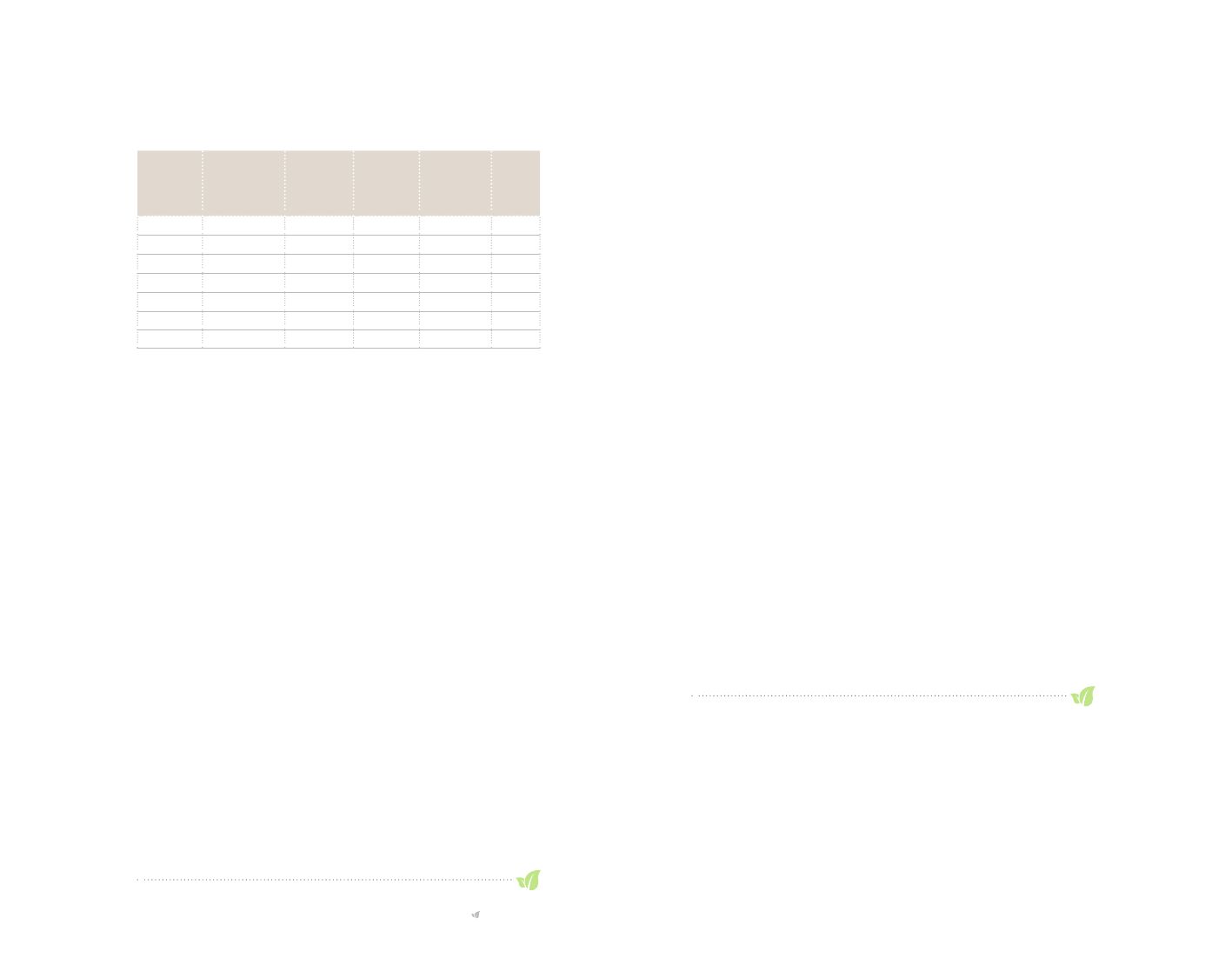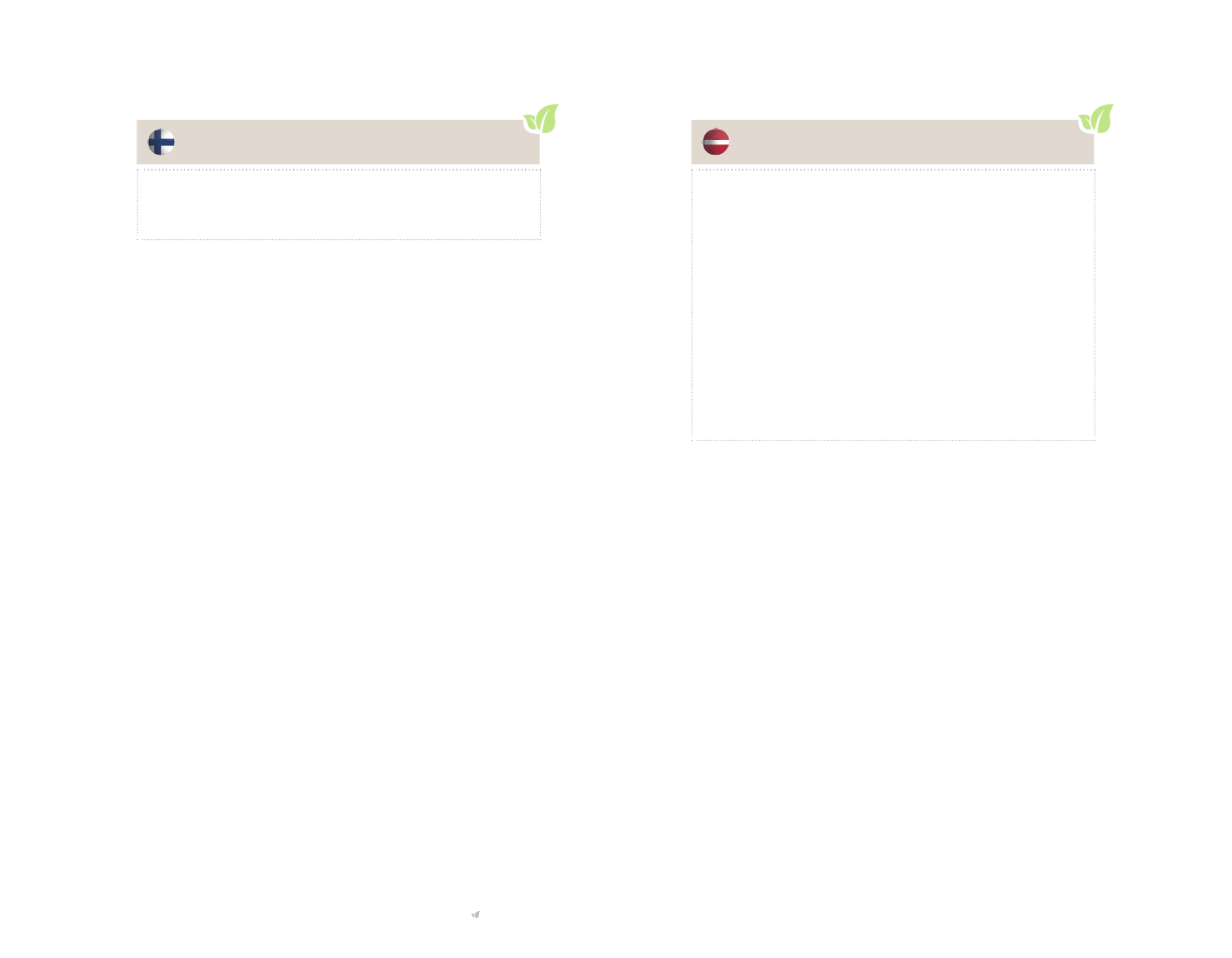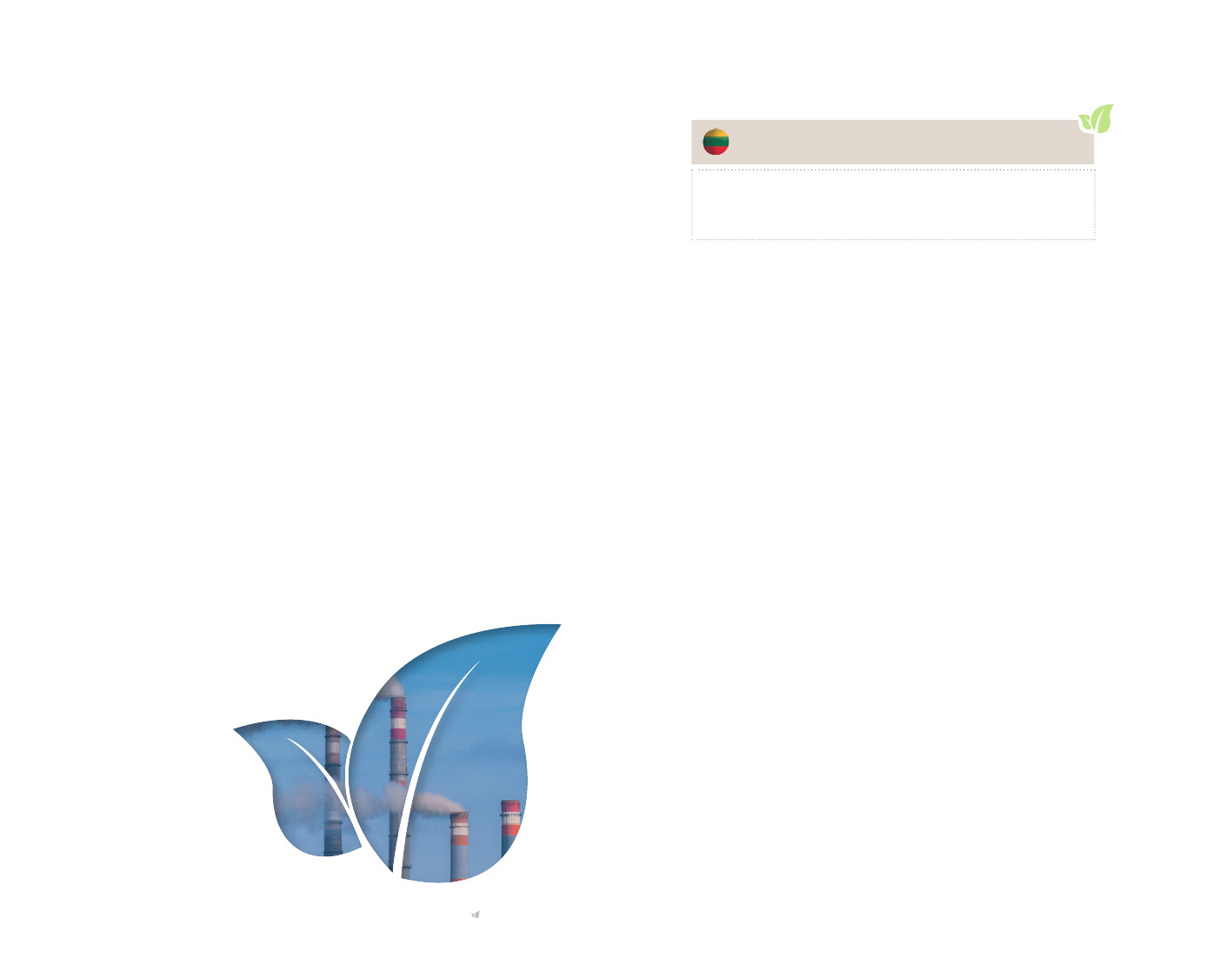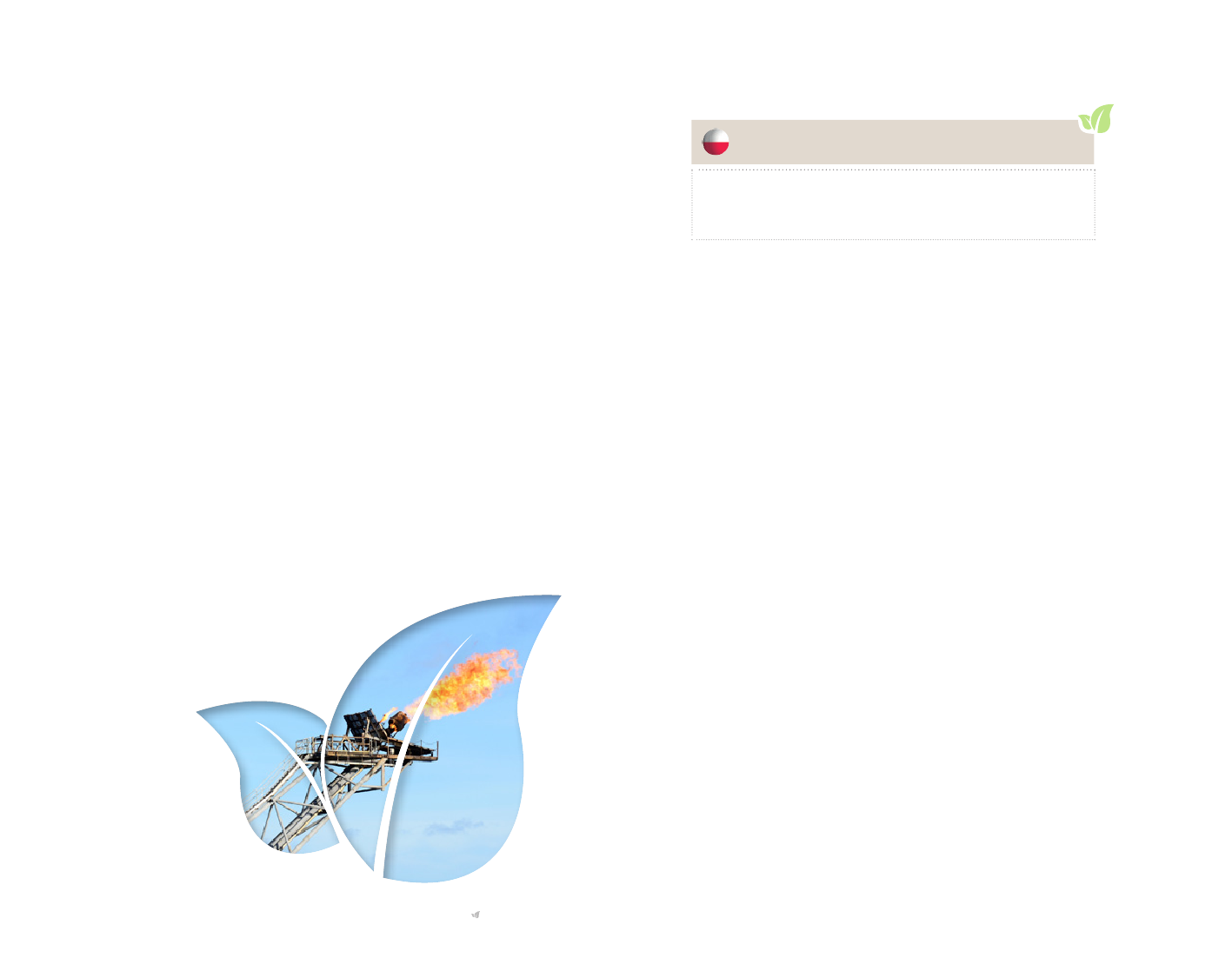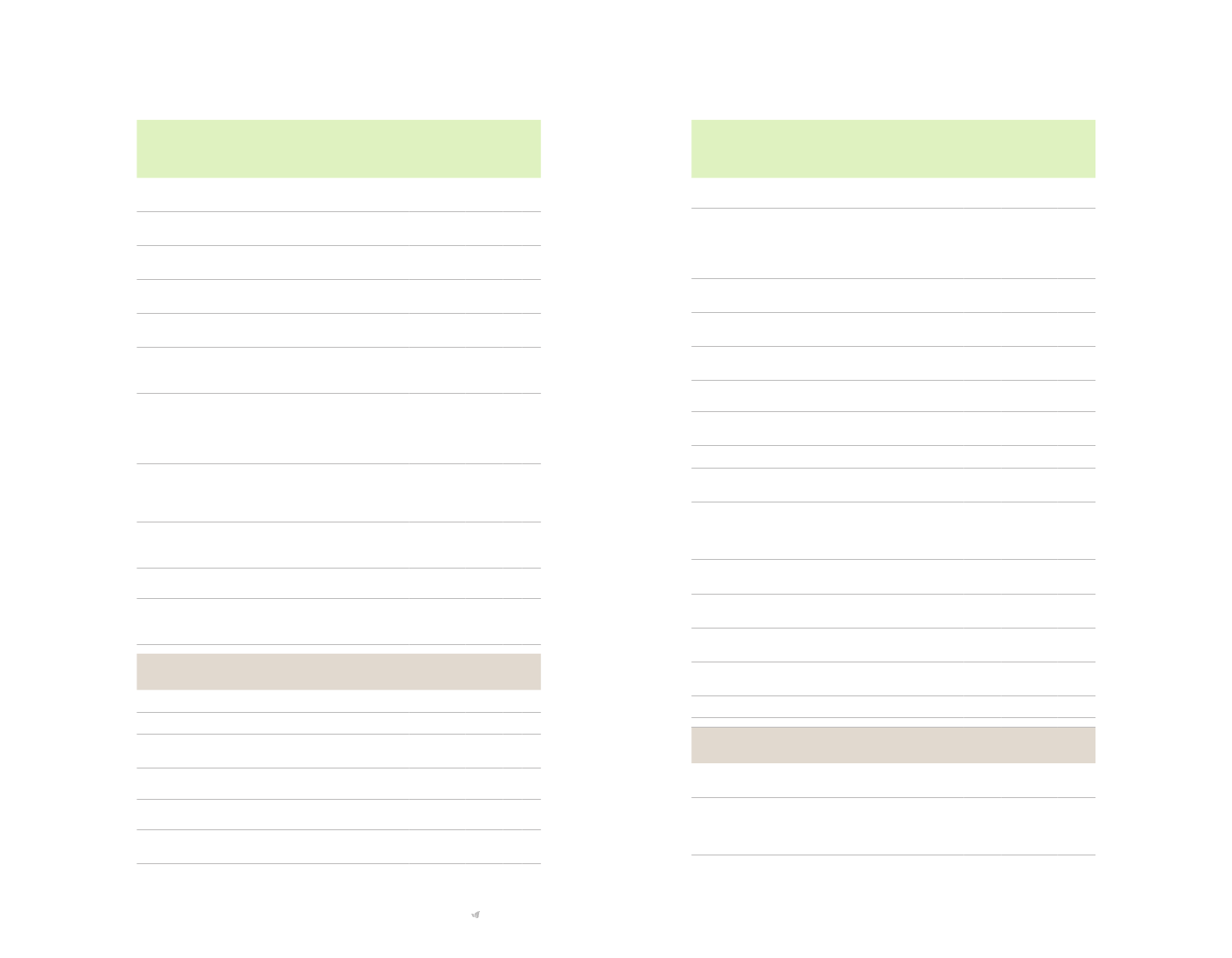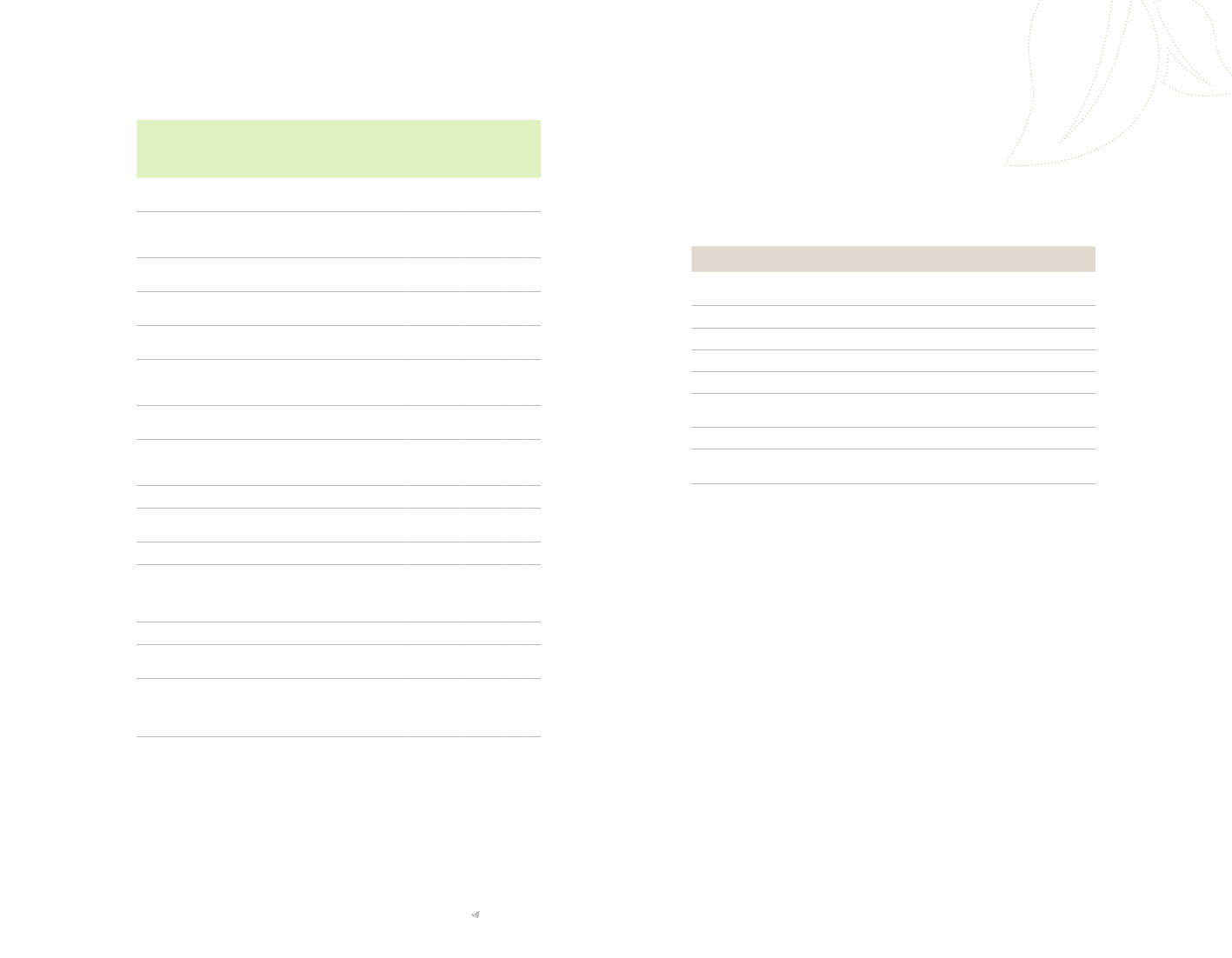Klima-, Energi- og Bygningsudvalget 2012-13
KEB Alm.del Bilag 216
Offentligt
Rigsrevisionen, DenmarkNational Audit Office of FinlandState Audit Office of the Republic of LatviaNational Audit Office of LithuaniaOffice of the Auditor General of NorwayPolish Supreme Audit OfficeSwedish National Audit Office
Emissions trading to limitclimate change:Does it work?A cooperative audit
www.eurosaiwgea.org
Joint report
Seven European Supreme Audit Institutions have been partners in this cooperative audit onemissions trading:Rigsrevisionen, Denmark•www.rigsrevisionen.dkNational Audit Office of Finland•www.vtv.fiState Audit Office of the Republic of Latvia•www.lrvk.gov.lvNational Audit Office of Lithuania•www.vkontrole.ltOffice of the Auditor General of Norway•www.riksrevisjonen.noPolish Supreme Audit Office•www.nik.gov.plSwedish National Audit Office•www.riksrevisionen.se
Content Overview
Message from Heads of Supreme Audit Institutions.........................Summary.................................................................................................Acronyms and glossary.........................................................................Report......................................................................................................
24610
Reviewer of the joint report:National Audit Office of Estonia•www.riigikontroll.ee
Supreme Audit InstitutionsThis document is available at www.eurosaiwgea.orgPrinted copies may be ordered from:Office of the Auditor General of Norway / EUROSAI WGEA SecretariatP.O. Box 8130 DepNO-0032 OsloNorwayE-mail: [email protected]Tel.: (+ 47) 22 24 10 00Fax: (+ 47) 22 24 10 01ISBN (print): 978-82-8229-209-2ISBN (web): 978-82-8229-210-8Print: 07 Gruppen AS
The role of Supreme Audit Institutions (SAIs) is to conduct independent auditsof governments’ activities. These assessments provide the national parliamentswith objective information to help them examine the government’s publicspending and performance. The International Organisation of Supreme AuditInstitutions (INTOSAI) is the international umbrella organisation for SupremeAudit Institutions. The aim of the institutionalised framework is to promotedevelopment and transfer of knowledge, improve government auditing world-wide and enhance professional capacities, standing and influence of memberSAIs in their respective countries. The regional organisation for Supreme AuditInstitutions on the European level is EUROSAI. One of its working groups isthe EUROSAI Working Group on Environmental Auditing (EUROSAI WGEA).The aim of the working group is to contribute to increase the SAIs’ capacity inauditing governmental environmental policies, to promote cooperation, andto exchange knowledge and experiences on the subject between SAIs.
Messages from Heads ofSupreme Audit InstitutionsThe Supreme Audit Institutions play an important accountability roleby reporting to parliaments on the efficient, effective and cost-effectiveimplementation of, amongst other things, environmental and energypolicies.Ms Lone Lærke StrømAuditor GeneralRigsrevisionenDenmark
There has been significant Value Added Tax (VAT) fraud related toemissions trading, which challenges the credibility of the system andresults in a loss of state income. Some count ries have introducedtemporary measures against VAT fraud in trading allowances, but acomprehensive and long-term solution is not yet in place.Based on these conclusions, we recommend consideration of thefollowing:• In order to ensure adequate incentives for long-term reductions of emissions, it should be ensured that instruments are in place and used to limit any excessive amounts of allowances/credits for the next emissions trading period.• Governments should consider making full use of their discretionary power provided by EU legislation to improve the effectiveness of the system.• Vigilance is still needed in the area of VAT fraud, and cooperation between tax authorities and EU ETS administrators, as well as cross-border cooperation remains important.• To speed up the project process, simplifying procedures for CDM projects should be considered, without giving up the strict require-ments for control and verification. It is also important that the buyer countries conduct proper risk analyses in order to detect and handle problems at an early stage.
Mr Vesa JatkolaAssistant Auditor GeneralNational Audit Office ofFinland
Climate change is considered by both United Nations (UN) and EU asone of the biggest environmental, economic and social challenges, andneeds to be addressed in a coordinated effort at an international level.Emissions trading is a key policy instrument in meeting national andthe Kyoto Protocol emissions targets in a cost-effective way. Theimplementation of the EU Emissions Trading System (EU ETS) and theproject-based mechanisms under the Kyoto Protocol (the Clean Devel-opment Mechanism (CDM) and Joint Implementation (JI)) have been ahuge administrative undertaking and entail new tasks and roles forgovernments and companies. There are potential risks related to theimplementation of these systems as well as to their effectiveness.The aim of the cooperative audit has been to assess the trustworthiness,reliability and effectiveness of the EU ETS and project-based mecha-nisms under the Kyoto Protocol. This report draws on findings gainedfrom individual audit reports from seven countries in the years 2008–2012.The cooperative audit has established that the governments of theNordic–Baltic–Polish partnership have implemented the EU ETS in linewith current EU legislation and the provisions under the United NationsFramework Convention on Climate Change (UNFCCC). The effective-ness of the system in contributing to long-term emissions reductionsis however a major challenge as allowance prices have been low dueto a general surplus of allowances in the system during the period2008–2012.Moreover, the full potential of the JI and CDM mechanisms is not beingrealised. The main reasons are slow approval and verification proce-dures. The cooperative audit has also identified weaknesses in the riskmanagement in the buyer countries.
Mr Jørgen KosmoAuditor General /Chair of EuROSAiWGEAOffice of the AuditorGeneral of Norway
Mr Jacek JezierskiPresidentSupreme Audit Officeof Poland
Ms Inguna SudrabaAuditor GeneralState Audit Office ofthe Republic of Latvia
Mr Claes NorgrenAuditor GeneralSwedish NationalAudit Office
Ms Giedrė ŠvedienėAuditor GeneralNational Audit Office ofLithuania
2
EUROSAI WGEA
EMISSIONS TRADING TO LIMIT CLIMATE CHANGE: DOES IT WORK?
3
Summary
The Nordic–Baltic–Polish cooperative audit on emissions trading was performed in2012 and involved the Supreme Audit Institutions (SAIs) of Denmark, Finland, Latvia,Lithuania, Norway, Poland and Sweden.1The report builds on 13 individual nationalaudit reports.The aim of the cooperative audit was to assess:• the effectiveness of the EU Emissions Trading System (EU ETS) in reducing national greenhouse gas emissions or fostering technology development• the proper functioning of the EU ETS: national registries, greenhouse gas emis-sions permits and emissions reporting• the implementation and administration of Clean Development Mechanism (CDM) and Joint Implementation (JI) programmesThere are clear indications from the cooperative audit that the emissions limitationtargets adopted in the Kyoto Protocol or through the EU Burden Sharing Agreementare likely to be met in all seven countries by the end of the first Kyoto Protocolcommitment period (end of 2012). The countries have implemented the EU ETS inline with the current EU legislation and the provisions under the UNFCCC. However,the effectiveness of the system in reducing emissions is a major challenge. For theNordic countries the EU ETS provided little incentive for long-term reductions in CO2emissions as allowance prices have been low due to a general surplus of allowancesin the system during the period 2008–2012. Taking into account the slower economicgrowth than expected, emissions trading did not provide a strong market mechanismthat has raised the costs of emissions related to production and given a competitiveadvantage to cleaner production.The audits for Latvia, Lithuania and Poland have shown that emissions have increasedat a slower pace than economic growth. However, in this audit it has not been pos-sible to measure whether this can be attributed to the effectiveness of the EU ETS.
Most governments have not used their discretion provided in the EU legislation toauction 10% of the allowances to operators or to set restrictions on the use ofoperators’ revenues from selling allowances. Both of these factors have led to lesscontrol of the system.The EU ETS has been complicated to put into place, but overall the system has beenproperly implemented. Verification procedures for operators’ monitoring and report-ing of emissions are in place. However, the data security of the national registrieshas been challenged by fraudsters. Major concerns relating to IT security have beenaddressed through national initiatives and system changes. The recent centralisationof the registry is expected to strengthen security further.There have been major cases related to cross-border VAT fraud in trading allowances.These were caused by lack of a proper verification of the identity of individuals andby criminals who were abusing normal VAT reimbursement procedures. The identi-fication problems were solved and a temporary change to reverse charge VAT inseveral countries has reduced the risk of fraud, while a long-term and more compre-hensive solution is still to be established.All the Nordic countries have established purchase programmes for CDM and JIprojects. Delivery of credits has generally taken longer than planned. The audit froma host country concluded that the full potential for JI projects has not been realisedyet. Furthermore audits in the Nordic countries have found that better risk assessmentcould improve effectiveness.
1
Estonia participated as a reviewer of the report.
4
EUROSAI WGEA
EMISSIONS TRADING TO LIMIT CLIMATE CHANGE: DOES IT WORK?
5
Acronyms and glossary
AAU– Assigned Amount Unit: a Kyoto Protocol unit equal to one tonne of carbondioxide equivalent. The industrialised countries in Annex I to the United NationsFramework Convention on Climate Change (UNFCCC) are issued AAUs up to thelevel of their assigned amount. AAUs may be exchanged through international emis-sions trading.Allowance– An allowance to emit one tonne of carbon dioxide equivalent during aspecified period. Allowances are part of the EU Emissions Trading System and aretransferable. An allowance from the project-based mechanisms (Clean DevelopmentMechanism and Joint Implementation) is often called credit.Carbon leakage– An increase in emissions outside a country or region as a directresult of a policy to limit emissions in a country or region, for example in the form ofa cap or a tax on emissions.Cap and trade principle –A cap is set on the total amount of greenhouse gasemissions that can be emitted by the installations in the system. Companies receiveemissions allowances within a fixed limit that they can use to compensate for theiremissions, sell or buy. The limit on the total number of allowances available ensuresthat allowances have a value.CDM– Clean Development Mechanism: A mechanism under the Kyoto Protocolthrough which developed countries finance greenhouse gas emission reduction orremoval projects in developing countries.CER– Certified Emission Reduction: A Kyoto Protocol unit equal to one tonne ofcarbon dioxide equivalent. CERs are issued for emission reductions from CleanDevelopment Mechanism projects.CO2– Carbon dioxide: A gas produced by burning carbon and organic compoundsand by respiration. It is the principal anthropogenic greenhouse gas that affects theEarth’s radiative balance.CO2 equivalent –a unit for measurement of greenhouse gas emissions. It states thequantity of a greenhouse gas expressed in terms of the amount of carbon dioxidethat has the same impact on the climate: the impact of, for example, 1 kg of methanecorresponds to 21 kg CO2.
Community Independent Transaction Log– Monitors, registers and validates all trans-actions between accounts in the National registries. Replaced by the European UnionTransaction Log upon activation of the Union Registry.Cost-effectiveness– The degree to which objectives are achieved in comparison torelative expenditure.Credit –refer to “allowance”.Effectiveness– The extent to which objectives are achieved and the relationshipbetween the intended impact and the actual impact of an activity.Efficiency– The relationship between the output, in terms of goods, services orother results, and the resources used to produce them.ERU– Emission Reduction Unit: A Kyoto Protocol unit equal to one tonne of carbondioxide equivalent. ERUs are generated for emission reductions from Joint Imple-mentation projects.ETS– Emissions Trading System: A climate policy instrument based on a cap andtrade principle, aiming to reduce greenhouse gas emissions by providing economicincentives.EU Burden Sharing Agreement– Under the Kyoto Protocol, the pre-2004 EU-15group of Member States has taken on a common commitment to reducing emissionsby 8 % on average between 2008 and 2012, compared to base-year emissions (1990).Within this overall target, differentiated emissions limitation or reduction targetshave been agreed for each of the 15 pre-2004 Member States under an EU accordknown as the “Burden-Sharing Agreement”.EUROSAI– European Organisation of Supreme Audit InstitutionsEUROSAI WGEA –EUROSAI Working Group on Environmental AuditingEU ETS– EU Emissions Trading System, formerly also referred to as Emissions TradingScheme.
6
EUROSAI WGEA
EMISSIONS TRADING TO LIMIT CLIMATE CHANGE: DOES IT WORK?
7
European Union Transaction Log– Automatically checks, records and authorises alltransactions that take place between accounts in the Union Registry.Flexible Mechanisms– The Kyoto Protocol introduced three market-based mecha-nisms, thereby creating what is now known as the “carbon market.”The Kyotomechanisms are: Emissions Trading, the Clean Development Mechanism and JointImplementation.GHG– GreenHouse Gas: Gaseous constituents of the atmosphere, both natural andanthropogenic, which absorb infrared radiation in the atmosphere.Hacking– Unauthorised attempt to bypass the security mechanisms of an electronicsystem.INTOSAI –International Organisation of Supreme Audit InstitutionsIPCC –The Intergovernmental Panel on Climate Change was set up in 1988 to provideauthoritative scientific assessments on climate change.International Transaction Log– Related to the United Nations Framework Conven-tion on Climate Change, verifies transactions proposed by national registries toensure they are consistent with rules agreed under the Kyoto Protocol.JI– Joint Implementation: A mechanism under the Kyoto Protocol through which adeveloped country can receive emission reduction units when it helps to financeprojects that reduce net greenhouse gas emissions in another developed country.Kyoto Protocol –The Kyoto Protocol was adopted under the United Nations Frame-work Convention on Climate Change in 1997 and sets binding targets for the reduc-tion of greenhouse gas emissions by industrialised countries.LULUCF –Land Use, Land Use-Change and ForestryNational Allocation Plan– Each member of the EU Emissions Trading System has todevelop a National Allocation Plan. The plan defines the total amount of emissionsallowances for a given period and how it intends to allocate these to operators.Operator– A company subject to the EU Emissions Trading System.OECD –The Organisation for Economic Co-operation and Development.Phishing– An attempt to get access to confidential information under the pretenceof being a trustworthy part of the electronic system in question.
Project-based mechanisms– Established under the Kyoto Protocol, see JI and CDM.Reverse charge VAT collection– Value Added Tax collection system whereby thebuyer – and not the seller, as in the general rule – is responsible for calculating andpaying the value added tax on the sales.SAI– Supreme Audit InstitutionsUNFCCC –United Nations Framework Convention on Climate ChangeVAT –Value Added Tax
8
EUROSAI WGEA
EMISSIONS TRADING TO LIMIT CLIMATE CHANGE: DOES IT WORK?
9
rEport
Table of Contents
1 Background.........................................................................................1.1 The EU Emissions Trading System............................................1.2 The Clean Development Mechanism (CDM) andJoint Implementation (JI)..........................................................1.3 Scope of the cooperative audit................................................1.4 Audit methods...........................................................................2 Findings...............................................................................................2.1 The effectiveness of the EU Emissions Trading System inreducing GHG emissions..........................................................2.2 National registries, GHG emissions permits andverification of emissions reporting...........................................2.3 The implementation and administration of CDM andJI programmes...........................................................................3 Conclusions and Recommendations................................................4 Lessons learned.................................................................................5 Acknowledgements...........................................................................6 National Abstracts..............................................................................7 Audit matrix.........................................................................................8 Partners...............................................................................................9 Audit Criteria.......................................................................................9.1 Relevant UNFCCC and EU legislation and audit criteria........9.2 UNFCCC legislation...................................................................9.3 EU legislation.............................................................................9.4 National audit criteria................................................................10 References.........................................................................................
131316181920202941525557587579808081818283
EMISSIONS TRADING TO LIMIT CLIMATE CHANGE: DOES IT WORK?
11
1 Background
1.1 the EU Emissions trading SystemThe Kyoto Protocol under the United Nations Framework Convention on ClimateChange (UNFCCC) has worked out the so-called flexible mechanisms to meet nationalemissions targets. These mechanisms consist of Emissions Trading Systems (ETS),the Clean Development Mechanism (CDM) and Joint Implementation (JI). The KyotoProtocol provides individual country targets for greenhouse gas (GHG) emissions.2The EU has within the framework of the Kyoto Protocol established an EmissionsTrading System (EU ETS) as a key policy instrument to mitigate GHG emissions. Figure1 illustrates the relation between the EU ETS and non-ETS sectors and the differentKyoto mechanisms.
Figure 1: The relation between the EU ETS and non-ETS sectors
Kyoto target
Emissionstrading sector
Non-emissions-trading sector
Domestic emission reductionsGopu vernrch meas nteFlexible mechanisms- Emissions trading- Project mechanisms(JI, CDM)Sector policies- Transport- Agriculture- Waste-…2The pre-2004 15 EU Member States are committed to reducing their average emissions by 8% in theperiod 2008–2012 compared with base year levels (1990). For the EU to reach its reduction targets, in1998 a political agreement was reached to divide the burden of reaching this target unevenly amongMember States.
EMISSIONS TRADING TO LIMIT CLIMATE CHANGE: DOES IT WORK?
13
The EU ETS is one of the cornerstones in the EU “20-20-20” energy and climate target.Its purpose is to reduce GHG emissions in a cost-effective and economically efficientmanner. It is based on the “cap and trade” principle. The cap represents the amountof total allowed emissions for the system as a whole and for each installation emittingGHG. That means that the effectiveness of the system is in principle equal to the totalemissions reductions according to the cap. One carbon credit unit, or emissionsallowance, is the right to emit one tonne of CO2equivalent.The EU implemented its first ETS in 2005. In 2008 the system was expanded. TheETS now operates in 30 countries (the 27 EU Member States, Iceland, Liechtensteinand Norway). The system covers GHG emissions from installations such as powerplants, combustion plants, oil refineries and iron and steel works, as well as factoriesproducing cement, glass, lime, bricks, ceramics, pulp, paper and board. The instal-lations currently in the system account for almost half of the EU’s CO2emissions and40% of its total GHG emissions.If the operator has a deficit of allowances in relation to its emissions, the operator canbuy more allowances on the market. If the operator has a surplus of allowances, theoperator can sell them. The cost of buying allowances is meant to trigger investmentsthat will reduce emissions, or reduce the demand for carbon-intensive products. Theprice of allowances is determined by the market (supply and demand). The numberof allowances in the ETS is consequently an important factor for its effectiveness.National Allocation Plans (NAPs) set out the total quantity of allowances that govern-ments grant to operators in the first (2005–2007) and the second (2008–2012) tradingperiods. Before the start of these periods, each country had to propose how manyallowances to allocate in total for the trading period and the amount each installationwould receive. The plans were subject to approval or rejection by the EuropeanCommission or the EFTA Surveillance Authority. For the 2008–2012 trading periodthe cap corresponds to the sum of allowances in the NAPs which have been approved.The total number of allowances in the EU ETS can only be changed if the cap in theEU ETS is modified. Operators may, however, buy CDM and JI credits up to a certainlimit – and in this way the actual number of allowances in the EU ETS is increasedabove the cap.From 2012 the EU ETS also covers airlines. When the third trading period (Phase III,2013–2020) starts, the system will be extended to cover more sectors, petrochemicals,ammonia and aluminium industries and to additional gases. Further, the EU sets thecap for each Member State and allocates free allowances to the Member States. InPhase III the EU has put in place a single European cap on emissions in the ETS. TheEuropean Commission has proposed to amend the ETS Directive to postpone someof the allowances to a later part of Phase III in order to increase the allowance pricesin the first part of Phase III by limiting supply.3
During Phase II operators could receive their allowances free of charge from thestate, or buy some of them. For the trading period 2008–2012, at least 90% of theallowances had to be allocated free of charge. The remaining allowances could besold, by for example auctioning. Within the EU, six Member States have informedthe European Commission that they would auction allowances. In Phase III the EUexpects to give half of the allowances away for free and auction the other half.Operators must be in possession of a GHG emissions permit including a monitoringplan which defines the methods for measurement or calculation of emissions. Athorough assessment of operators’ GHG emissions permit applications is essentialin order to provide a sound basis for subsequent emissions reporting.Correct emissions monitoring and reporting is the basis for operators’ annual allow-ance settlement, but also the basis for future allocation periods on an aggregatedcountry level as well as on the operator level. Adequate verification of emissionsmonitoring and reports is therefore crucial. The Commission has within the frameworkof the ETS Directive adopted repor ting guidelines for GHG emissions. The Directive(Article 14 ) requires governments to ensure that operators of installations monitorand report their GHG emissions in accordance with these guidelines. Operators haveto submit emissions reports electronically each year within a fixed deadline. Thecompetent authority for GHG emissions has then to verify these reports and approvethe amount of reported emissions. Operators must surrender the equivalent numberof allowances by 30 April of the same year.Each state participating in the EU ETS must operate a national ETS registry. Theregistry system is similar to a banking system, which keeps track of the ownership ofmoney in accounts, but does not look into the deals that lead to money changinghands. To participate in the EU ETS, a company or a natural person must open anaccount in one of the national registries.These registries are online databases that record:• accounts to which allowances have been allocated• transfers of allowances (“transactions”) performed by account holders• annual verified GHG emissions from installations• annual reconciliation of allowances and verified emissions, where each operatormust have surrendered enough allowances to cover all its emissionsThe National registry shall ensure the accurate accounting of allowances as well asthe accuracy of data, the security of data storage and exchange, and the transparencyand auditability of transactions. Given the significant monetary value of the ETS forboth the state and the operators, it is paramount that the national registry is secureand functioning properly. In addition, well-functioning control mechanisms and trans-parency are important factors to instil confidence in the system. The trust worthiness
3
Commission prepares for change of the timing for auctions of emissions allowances.News article, 25 July2012.
14
EUROSAI WGEA
EMISSIONS TRADING TO LIMIT CLIMATE CHANGE: DOES IT WORK?
15
of the EU ETS depends on its capacity to protect itself from different kinds of fraud,such as hacking4, phishing5and VAT fraud.
Box 1:COUNTRIES WITh qUANTIFIED COmmITmENTSIn July 2012, the national registries have been replaced by a single EU registry oper-ated by the European Commission. The European Union Transaction Log (formerlyCommunity Independent Transaction Log) records and authorises all transactionsthat take place between accounts in the EU ETS registries. This verification is doneautomatically and ensures that any transfer of allowances from one account to anotheris consistent with the EU ETS rules.Industrialised countries listed in Annex I to the UNFCCC, which have accepted emissions targets for the period 2008–2012 in ccordance awith the Kyoto Protocol. They include • most of the original OECD members, except USA and Canada (including Denmark, Finland, Norway and Sweden)• he European Union members, except Cyprus and Maltat• countries with economies in transition including Latvia, (Lithuania and Poland)Of the countries participating in this audit, in particular Latvia, ithuania Land Poland are otential sellers pof allowances and hosts of JI Icelandprojects. Denmark, Finland, Norway and Sweden are potential buyers of credits from CDM and JI projects.NorwayEstoniaSwedenLatviaDenmarkIrelandUnitedKingdomLithuania
1.2 the Clean Development Mechanism (CDM) andJoint Implementation (JI)The so-called project-based Kyoto mechanisms, CDM and JI, allow for the use ofcertified reductions from third countries to meet own emissions targets. These arebased on the principle that it does not matter for climate change where the GHGemissions occur, and that emission-reducing measures can be implemented wherethey give the greatest emissions reduction per unit of money invested. The purposeof the CDM is to assist countries without quantified commitments in achieving sustain-able development and in contributing to the ultimate objective of the UNFCCC, aswell as to assist the Annex I Parties under the UNFCCC (see box 1) in meeting theirquantified emission commitments. It is also a goal of the Kyoto Protocol that CDMprojects should result in real, measurable, long-term benefits and reductions inemissions which are additional to any that would have occurred in the absence ofthe certified project activities. JI, like CDM, is a project-based mechanism, but JIprojects are carried out in countries with quantified commitments under the KyotoProtocol (see box 1).The Parties to the Kyoto Protocol have adopted detailed rules for the verification ofCDM and JI projects. All CDM projects must go through an extensive certificationprocess in which emissions reductions and their contribution to sustainability in thehost country must be documented. This process is intended to ensure that projectsare implemented in accordance with CDM regulations negotiated by the parties tothe Kyoto Protocol. The project must be approved by an external designatedoperational entity, by the CDM Executive Board appointed by the UNFCCC and bythe host country. The CDM Executive Board evaluates and certifies projects. Anexternal certified company checks the project at two different stages: on validationand on verification. A similar system is in place for JI projects.
Finland
Russia
■ ountries potentially Chosting JI projects■ ountries potentially Cbuying JI and CDM credits
Belarus
NetherlandsGermanyBelgiumLuxemburg
PolandUkrainaCzech RepublicSlovakiaMoldova
FranceSwitzerland
AustriaSloveniaCroatia
HungaryRomania
SerbiaBosnia &HerzegovinaItalyPortugalMontenegroKosovo
Bulgaria
MacedoniaSpainAlbaniaGreeceTurkey
45
Hacking attacks may occur if internal security is not strictly ensured such as by logging into an unsecu-red network.Phishing is attempting to acquire account holders’ user names and passwords under the pretence ofbeing a trustworthy part of the electronic system, and thus gain access to the system.
16
EUROSAI WGEA
EMISSIONS TRADING TO LIMIT CLIMATE CHANGE: DOES IT WORK?
17
1.3 Scope of the cooperative auditThe aim of the cooperative audit was to assess:• the effectiveness of the EU ETS in reducing national GHG emissions or fosteringtechnology development• the proper functioning of the EU ETS: national registries, GHG emissions permitsand emissions reporting• the implementation and administration of CDM and JI programmesThe audit has focused on the first commitment period of the Kyoto Protocol and thesecond phase of the EU ETS, i.e. 2008–2012.The scope of the individual audits of the participating SAIs naturally varies, as bothrisks and implementation differ between the countries. An overview of the scopeand time of audits is provided in table 1. Abstracts of the individual national auditsare provided in chapter 6.• All partner countries to the audit except Finland have audited effectiveness interms of either emissions target achievement or emissions trading as a means toachieving the target.• Registry systems were audited by Denmark, Latvia, Lithuania, Norway and Polandand emissions reporting by Latvia, Lithuania, Norway and Poland.• The implementation and administration of CDM and JI programmes were auditedby all partner countries, except Latvia6. Denmark only audited the contribution inthe form of credits from CDM/JI projects.
1.4 Audit methodsCooperative auditThe overall findings, conclusions and recommendations as well as the case studiesin this report are based on the SAIs’ answers to a set of common audit questions(see chapter 7) and on the national audit abstracts. Supplementary information hasbeen provided by SAIs on request. The interpretation and incorporation of theindividual national findings in the cooperative audit’s findings, conclusions andrecommendations have been quality controlled by each individual SAI.
National auditsThe national audits’ approaches, including audit criteria, methodology, quality controland publication of the national results, have been carried out in accordance with thecountries’ standard procedures. The audit criteria applied in the national audits arebased on national criteria, EU legislation and international commitments. The commonbasis for the audit criteria is provided in chapter 9. The actual criteria used can varyfrom audit to audit. Standard auditing methodologies like interviews, documentanalysis, spot checks and questionnaires have been applied.
Table 1: Partner countries’ auditsDenmark Finland Latvia Lithuania Norway Poland SwedenNational targets /Kyoto ProtocolEffectiveness ofemissions tradingImplementationand admini-stration of CDM/JI programmesEmissionsreporting andregistriesNo. of reports2011201220122009 +follow-up in201120112011201120082012201220102010201020092012200920122012200920122011
2012
2012
2009201223
2
1
1
2
2
6
Where there are no accepted CDM and JI programmes.
18
EUROSAI WGEA
EMISSIONS TRADING TO LIMIT CLIMATE CHANGE: DOES IT WORK?
19
2 Findings
2.1.1 targets under the Kyoto protocol and the EU BurdenSharing Agreement are likely to be metThe cooperative audit shows that in some of the countries, the EU ETS is a significantmechanism in reaching the Kyoto Protocol targets. Overall, the EU has a reductiontarget of 8%, with individual country targets according to the EU Burden SharingAgreement (see table 2).
2.1 the effectiveness of the EU Emissions tradingSystem in reducing GHG emissionsIn order to assess the effectiveness of the EU ETS in reducing GHG emissions, thefollowing audit objectives have been addressed:1.2.3.Will the countries fulfil their GHG emission targets under the Kyoto Protocol forthe period 2008–2012?Has the EU ETS given incentives for operators to invest in GHG emission reduc-ing technologies?Has the implementation of the EU ETS in each country been conducive to ensureeffectiveness?
Table 2: GHG emissions and Kyoto Protocol targets (excluding LULUCF)Change Base year Target emissions 2008–2012, base %-change year– (Mill. 2008 tonnes CO2 base year equi-(%)valents)DenmarkFinlandLatviaLithuaniaNorwayPolandSweden707127495056473-210-8-8+1-6+4-7.1-0.2-55.8-51.0+8.1-28.9-12.6Change base year– 2009 (%)-11.3-6.0-58.7-59.1+3.3-32.3-18.0Change Emissions Emissions Emissions base 20082009 2010year– (Mill. (Mill. (Mill. 2010 tonnes CO2 tonnes CO2 tonnes CO2 (%)equi-equi-equi-valents)valents)valents)-10.5+6.0-54.5-57.1+8.2-28.9-9.0657012245440164626611205238260637512215440166
Box 2:EFFECTIvENESS OF ThE EU ETS IN REDUCING GhGEmISSIONSIn assessing the effectiveness of the EU ETS in reducing GHG emis-sions, two factors have been examined:- hether the objectives of the system in terms of reaching the GHG wemission targets have been achieved- hether the achievement of the objective of reaching the GHG emis-wsion targets can be attributed to the EU ETS
Source: Annual European Union greenhouse gas inventory 1990–2010 and inventory report 2012.Technical report No 3/2012. The European Environment Agency, 27 May 2012 and UNFCCC.
Table 2 shows that the emissions from Latvia, Lithuania and Poland have been sub-stantially below the average target each year from 2008–2010. It is therefore practi-cally certain that these countries will meet the target. For the participating Nordiccountries, except Sweden, actual emissions in the period 2008–2010 have been eitherabove or close to the target. However, the final accounts indicating whether thesecountries will meet the target will not only depend on national emissions reductionsin the remaining part of the period, but also on the countries’ use of the flexiblemechanisms. The audits show that in these countries, overall the reduction targetsare likely to be met by a combination of the EU ETS and the other flexible mechanisms.Whether the countries will meet the target for 2008–2012 cannot be assessed defi-nitely until data for the remaining part of the period are available.The EU ETS covers substantial parts of emissions from different sectors (see chapter 1)but its scope varies between the countries. Table 3 shows that the ETS sectors arerelatively biggest in Finland and Poland and relatively smallest in Latvia and Lithuania.In Finland, annual emissions vary considerably, e.g. depending on weather conditions.In 2010, the emissions in Finland were unusually high due to a shortage of hydroelectricpower in the Nordic electricity market.
20
EUROSAI WGEA
EMISSIONS TRADING TO LIMIT CLIMATE CHANGE: DOES IT WORK?
21
Table 3: Per cent of GHG emissions covered by the EU ETS in 2010 (% of total emissions excluding LULUCF)Denmark Finland Latvia Lithuania Norway Poland Sweden% of GHGemissions coveredby EU ETSSource: The SAIs
43%
55%
27%
31%
36%
50%(CO2only)
34%
Figure 2 shows the actual price of allowances in Phase II of the EU ETS. The price ofallowances was only for a short period, in 2008, above EUR 20. After this, the pricestabilised at around EUR 15 from end of 2008 until mid-2011. Since second half of2011, the price has gradually decreased to below EUR 5. By the beginning of December2012 the price was EUR 6.
Figure 2: The price of allowances 2008–2012 (EUR)
Table 3 shows that the EU ETS covers a large share of emissions in all countries. Case1 shows that the ETS sector in Denmark has contributed to the overall GHG emissionsreductions with a share which is in line with what was expected in the NationalAllocation Plan (NAP).
30252015
Case 1:
Expected and actual share of emissions from the ETSsector in Denmark are the same
1050
In Denmark, the actual share of GHG emissions from the ETS sectors was 43%in 2010, almost the same as the expected share for the period 2008–2012, whichwas 44%. The Danish audit concludes that this is more likely because of theeconomic crisis than because of the EU ETS.
1
8
0
0
1
9
9
08
10
11
201y2Ju
09
01
00
01
00
00
01
20
01
20
20
20
y2
y2
r2
y2
r2
r2
ne
r2
ne
ne
be
be
ar
ne
be
be
ar
ar
Ju
ru
Ju
Ju
to
ru
to
ru
to
to
Ju
Feb
Oc
Feb
Feb
Source: Thomson Reuters
2.1.2 In some countries, the EU EtS has not providedadequate incentives for operators to invest in GHG emissionreducing technologyThe price of allowances has been lower than expectedFor the EU ETS to have long-term effects on GHG emissions, it should lead to moreclean technology investments than would have been the case without the ETS.
A Green Paper7from the European Commission from 2000 estimated that a price ofEUR 33 is necessary to make the EU ETS effective. The expected price of allowancesused when Denmark drew up its NAP was EUR 20. Thus, the actual allowance pricehas – with an exception of a short period – been lower than the price projected toensure the effectiveness of the system.According to a EU Commission working document8, it is likely that the financial crisisis the main reason for the low price of allowances compared with the projected price.The crisis has led to lower than expected industrial production, which again has ledto a lower demand for allowances.Case 2 from Denmark and Norway illustrates that alternatives to buying allowancesmay be more costly. Furthermore, replacing the previous tax system with the EU ETShas resulted in fewer incentives to reduce domestic emissions in Norway. Case 3from Sweden illustrates that due to the low prices in the EU ETS the Swedish ETScompanies pay considerably less for their emissions than the companies outside theETS.78Green Paper ( COM(2000) 87 final) on greenhouse gas emissions trading within the European Union.Brussels, 8.3.2000.The EC Staff Working Document (2012) 234 final, 25.7.2012.
Box 3:ECONOmIC INCENTIvES TO REDUCE EmISSIONSAccording to standard economic theory, if reducing an operator’s emissions is cheaper than the price of allowances, the operator has an incentive to reduce GHG emissions and sell possibly freely allocated surplus allowances rather than buying extra allowances. On the other hand, if reducing GHG emissions costs more than the price of allow-ances, it is in the interest of the operator to buy allowances corre-sponding to its emissions. In these considerations, the operator will also have to assess the need for reductions under future ETS systems.
22
Feb
Oc
Oc
Oc
ru
ar
ne
20
12
EUROSAI WGEA
EMISSIONS TRADING TO LIMIT CLIMATE CHANGE: DOES IT WORK?
23
Case 2:
Alternatives to buying allowances are moreexpensive
Case 4:
Carbon tax on Norwegian petroleum activities hasreduced the growth in emissions
Estimates from the Danish audit (2012) on Denmark’s GHG emissions reductionsshow that the price of allowances needed to be considerably higher than EUR20 for it to have been cost-effective for energy-producing enterprises to investin land wind energy instead of coal.In Norway the EU ETS has replaced a CO2tax in several sectors. The audit from2010 concluded that the current price of allowances gives weaker incentivesfor implementation of national measures in most sectors than the tax did,because the tax implied a price of emissions which was higher than the currentallowance price. The effect of the ETS in reducing national emissions wasestimated to only 0–0.5 mill. tonnes per year.
Energy generation causes about 90% of the emissions from Norway’s petroleumsector. A CO2tax on petroleum activities offshore was introduced in Norwayin 1991. The 2010-audit found that this tax level translates into a cost per tonneof CO2emitted that is higher than in other sectors. In addition, emissions fromthis sector have been lower than they would have been without the tax.Operators report that measures to improve energy efficiency have beenmotivated by taxation. The audit found that this effect has decreased in recentyears because available reduction measures are no longer considered cost-effective by the companies.
Allocated allowances have exceeded actual emissions
Case 3:
Polluters’ costs for emissions in Sweden
Both the EU ETS and the CO2tax provide a price on CO2emissions,but companies in the trading sector have in practice paid very little, in somecases nothing, for emissions. This is due to reductions in and exemptions fromclimate-related taxes. This is also due to Swedish companies having obtaineda completely free allocation of more allowances than they have needed (seecase 6).In principle the CO2tax was abolished for Swedish companies within the ETSfrom 2011. For companies outside the ETS, the CO2tax has been increasedduring 2010–2015. According to the Swedish NAO’s calculations, Swedishcompanies in the trading sector are expected to see a decrease in expenditureon CO2tax of EUR 750 mill. per year for the period 2009–2015. In the non-trading sector, the companies are expected to see an increase in expenditureon CO2tax of EUR 209 mill. per annum during the same period.
Table 4 and 5 show the projected emissions compared to the allocations requestedby each country from the European Commission, as well as the allowances allocatedin the ETS sectors for each country.
Table 4: ETS Phase II: Projected emissions compared to requested allowances and allocated allowances. Annual average 2008–2012. Mill. tonnes CO2 equivalents Projected GHG emissions in Allocations Actually allocated the ETS sectors as submitted asked for by allowancesto the European Commission the countryfrom each countryDenmarkFinlandLatvia29.745.3(average per year 2008–2011)6.2524.539.66.2523.937.63.4(until 31 July 2011)*6.25(as per 1 Aug. 2011)*8.815.0*(of which 6.3 wereauctioned)205.6 *22.5 **Including reserve for new entrants
LithuaniaNorway
18.421.0(2010)208.5 (including new entrants)27.1
16.615.0
Carbon tax could be effective in reducing growth in emissionsCase 4 from Norway shows that a higher tax – and thus a higher price on emissions– provides an incentive for companies to invest in emissions-reducing technologies.PolandSwedenSource: The SAIs
208.525.2
In Phase II each country decided the total amount of allowances for its ETS sectors asa whole in its National Allocation Plan. The replies from the countries show that themethodologies used to calculate projected emissions and decide the total quantityof allowances differ between the countries. For most countries, the amount of allow-ances asked for were lower than the projected emissions and the finally approved
24
EUROSAI WGEA
EMISSIONS TRADING TO LIMIT CLIMATE CHANGE: DOES IT WORK?
25
number of allowances were the same as or lower than the amount asked for. All planshave been approved by the European Commission or the EFTA Surveillance Authority.Exept for Norway, Denmark (2008–2010) and Finland (2010), table 5 shows thatallocated allowances have been higher than the actual GHG emissions in the ETSsector taken together for all of the countries in all four years.
The audits for Latvia, Lithuania and Poland have shown that emissions have increasedat a slower pace than economic growth. However, in this audit it has not been possibleto measure whether this can be attributed to the effectiveness of the EU ETS.
2.1.3 the governments have not designed the parts of thesystem under their discretion optimallyIn general, all allowances were handed out for freeIn Phase II, each country decides the amount of allowances to be allocated to thesectors which are part of the ETS and, within the framework of the ETS Directive,whether the allowances are handed out for free to individual operators or auctioned.Governments in six out of seven countries handed out allowances for free, therebyreducing their own control over the system. Only Norway auctioned a large share ofits allowances. (See cases 5 and 6).
Table 5: Allocated allowances for EU ETS Phase II compared with actual emissions. Mill. tonnes CO2 equivalentsAllocated allowances for ETS Phase II, average per year, including reserve according to the NAPDenmarkFinlandLatvia24.537.6Actually allocated allowances for 2008–2011, average per yearActual emis-sions 2008Actual emis-sions 2009Actual emis-sions 2010Actual emis-sions 2011
23.937.6
26.5362.7
25.534.42.5
25.341.53.2
21.535.12.9
3.43.4(until 31 July 2011) (until 31 July 2011)6.254.41(as per 1 Aug.(as per 1 Aug.2011)2011: informationat 4 July 2012)8.8415208.522.52,0816.07.9204.022.21,983
Case 5:
Allocation of allowances in Norway
According to the EU ETS Directive, at least 90% of the allowanceswill be allocated free of charge. Norway, as an EEA/EFTA country, has beenexempt from this provision for the period 2008–2012. Norway decided to sellapproximately half of the allowances. No free allowances were allocated in thepetroleum sector.
LithuaniaNorwayPolandSwedenEU ETSoverall –for com-parison
6.119.3204.120.12,120
5.819.2191.217.51,880
6.419.4199.722.71,938
5.619.2203.019.81,854
Source: Data provided by each SAI and EC home page (http://ec.europa.eu/clima/policies/ets/registries/documentation_en.htm and http://europa.eu/rapid/press-release_IP-07-1614_en.htm )
When actual emissions are below the allocated allowances, there is no incentive forthe operators to buy extra allowances. Thus in the present Kyoto period (2008–2012),the operators have had very limited need to buy extra allowances or invest inemissions-reducing technologies. However, there is no accurate information onwhether the reductions have been achieved via lower production, investment in cleantechnology or by other means. As is seen in table 5, an average total of 1,983 mill.allowances have been allocated for the period 2008–2011, while actual emissionshave been on average 1,948 mill. tonnes per year. In Denmark, the amount of allow-ances allocated free of charge was 97% of the actual emissions in the period2008–2011.
26
EUROSAI WGEA
EMISSIONS TRADING TO LIMIT CLIMATE CHANGE: DOES IT WORK?
27
Case 6:
Surplus of allowances in Sweden
Every year from the start of the ETS in 2005, the trading sector inSweden has been allocated far more allowances than it has required. Due tothis, some installations and trade and industry sectors may have receivedconsiderable income without having had to take action to reduce emissions.To date, the surplus of allowances that have been allocated free of charge toSwedish companies has constituted a redistribution of capital which can beestimated to a value of approximately EUR 104 mill. per trading period. Compa-nies in certain trade and industry sectors have, however, had to purchaseallowances.
Case 7:
Not all operators spent revenues on emission-reductions measures in Latvia and Lithuania
The Latvian SAI collected information from a sample of energy operatorsregarding their use of revenues from the sale of allowances in Phase I from2005 to 2007. This showed that 17% of the energy sector operators in the sampleused the revenues to cover expenses which were not related to the reductionof GHG emissions.During the audit, tariff calculation methodologies for heat energy and cogen-eration envisaged that operators must use the revenue from emissions tradingto cover the costs of emissions reduction, such as renovating existing equipmentand purchasing of new equipment; these costs must not be included in therelevant tariff. After publishing the audit report, which included findings of alack of control over correct use of profits, the Public Utilities Commissionamended the tariff calculation methodologies and abolished the requirementthat the revenue from emissions trading must be used to cover the costs ofemissions reduction, arguing that the EU legislation does not prescribe theobligation to invest revenues from emissions trading to cover the costs ofemissions reduction.In Lithuania, in 2009 two operators did not spend the revenues as required.One operator did not provide complete information on received and usedincomes. In 2010, two operators did not submit required information to theMinistry of Environment.
Limited possibility to withdraw allowances In five of the countries, if an operator does not use its production capacity as fullyas assumed in the NAP, the operator is free to sell unused allowances. In two othercountries, allowances can be cancelled or given to other operators in some cases:in Finland cancelled in case of malpractice, and in Lithuania if the operator goesbankrupt. In Norway, the annual allocation is conditional on the operator holding avalid pollution permit and not having ceased activity. In Sweden, if an operator’spollution permit is revoked, the remaining yearly part of the allowances attributedto that operator may not be issued.
Few restrictions on the use of revenues from the sale of allowances In all of the partner countries to this audit except for Lithuania, private enterprisesmay use profits from selling allowances as they wish. This is in line with the marketprinciple the system is based upon. However, private enterprises in Lithuania andpublic operators in Latvia and Lithuania must use revenues from the sale of allowancesto invest in emissions reductions. In these two countries, some investment in emis-sions-reducing technologies is ensured to the extent that operators have sold allo-wances and that there is adequate control of the correct use of the profits. However,audits from the two countries conclude that the governments cannot prove that thecontrol is adequate. Furthermore, one of the audits concluded that not all operatorsspent the revenues as required, i.e. on emissions-reduction measures, nor did theyall report in line with requirements. This is demonstrated by case 7 from Latvia andLithuania.The Latvian audit has shown that in public service sectors, competitive conditionsare not fully met, and therefore it is easy for enterprises to transfer costs of buyingallowances to electric and heating energy consumers instead of investing in emissionsreductions. Consequently enterprises in public service sectors are not always moti-vated to find the cheapest ways of reducing emissions themselves, contrary to theETS basic principle.
2.2 National registries, GHG emissions permitsand verification of emissions reportingCountries participating in the EU ETS must operate a national ETS registry, issueGHG emission permits to operators and verify emissions reporting. The objectiveof this part of the cooperative audit is to assess:• whether all relevant operators are issued a GHG emissions permit and monitoringplan, and are allocated a correct number of allowances• whether the national registry operates properly and securely• whether the issue of fraud has been dealt with• the adequacy of the emissions monitoring and reporting by operators
28
EUROSAI WGEA
EMISSIONS TRADING TO LIMIT CLIMATE CHANGE: DOES IT WORK?
29
The organisation for issuing GHG emission permits and verifying emissions report-ing is illustrated in figure 3, showing the roles of the competent authority, the nationalregistry, independent verifiers and the accreditation body in relation to operators’obligations under the ETS.Figure 3: The key roles in the ETS system
Table 6: Number of installations subject to the EU ETS in each country in 2010Denmark FinlandNumber ofinstallationsSource: SAIs
Latvia Lithuania Norway Poland Sweden77101110811754
380
589
Competentauthority• identifies relevant operators/new entrants and assessesGHG permit applications (1)• issues GHG permits (2)• assesses allowanceapplications and approvesallowance quota (3)• assesses and approvesannual emissions report
Issuance of a GHG emissions permit and check of monitoring plan (see figure 3 point 2, page 30)On the whole, the competent authority ensures that operators are issued an appro-priate GHG emissions permit and that monitoring plans are in place.Operator• applies for a GHG emissionspermit• applies for emissionsallowances• submits verified annualemissions report• applies for account• surrenders allowances
Nationalregistry• opens accountsupon document check• allocates freeallowances uponverification annually• verifies surrender ofallowances
Case 8 and 9 illustrate the importance of a proper assessment of emissions permitapplications and the necessity of amending emissions permits and monitoring plansin case of changes at operator installations. The cases also give insight into acompetent authority’s assessment background.
Verification of annualemissions report
Case 8:
Assessment of permit applications in Latvia
Accreditationbody
Accreditationand control
Independentverifier
The Latvian audit has found instances where the competentauthority did not verify whether the amount of fuel consumption indicated inthe operator’s pollution permit corresponded to the amount stated in the GHGemissions permit application. As a result, the fuel quantity stated in the GHGemissions permits in the audit sample exceeded the maximum permissiblevolume of consumption by approximately 20 million m3or 29%.
2.2.1 operators are issued a GHG emissions permit andallocated a correct number of allowancesIdentification of relevant operators subject to the ETS (see figure 3 point 1)Although the institutional organisation of government bodies in charge of GHGemissions permits (competent authority) varies to some degree from country tocountry, the audit shows that the competent authority ensures that all installationssubject to the ETS are identified. Information is provided by environmental agenciesat national or regional level. Table 6 shows the number of installations subject to theEU ETS in each country.
30
EUROSAI WGEA
EMISSIONS TRADING TO LIMIT CLIMATE CHANGE: DOES IT WORK?
31
Case 9:
Assessment of permit applications in Norway
The Norwegian audit shows that many operators had already beenpart of the Nor wegian ETS from 2005, but had to update their permit andmonitoring plan for the next period. These operators were therefore alreadywell known, as the same authority had evaluated their initial application andthree annual emissions reports. In addition, on site-inspection with follow-upprocedures had been carried out at these operators’ installations.The authority assessed the applications of operators new to the ETS. In itscapacity as the national pollution authority, the authority was already acquaintedwith these operators as subjects to the Pollution Control Act and had a goodbackground for assessing these applications. The audit also shows that in caseof discrepancies between annual reports and emissions permits and monitor-ing plans, the authority demands that operators apply for a change in thepermits and plans.
Case 10 and 11 describe two situations where the national registry was not operatingnormally due to the intervention of supervisory mechanisms at EU and UNFCCClevel. In the first case the European Commission was responsible for a delay in theuploading of allocation plans in Latvia which caused late settlement. The secondcase relates to Lithuania, which has been partially suspended from trading allowancesand Kyoto units with other countries as a result of inaccuracies identified in thecountry’s reporting submitted under the Kyoto Protocol.
Case 10:
Delayed allowance allocations in Latvia
The Latvian audit shows that allowances were not allocated tooperators in time, thus impeding timely settlement. This was the case in 2008and 2009 when awaiting the European Commission’s internal decision onuploading allocation plans meant that approximately 19% of allowance alloca-tions were delayed by an average of 58 days.
Allocation of GHG allowances to operators(see figure 3, page 30)The audits establish that each country’s National Allocation Plan sets out the totalquantity of allowances to be granted to operators. In order to be allocated free allow-ances for the period 2008–2012, operators had to apply to the competent authoritywhich assessed the operators’ historical emissions before fixing their quota. In caseswhere historical data was unsuitable, due to substantial changes in activity, operatorshad to provide adequate documentation. Altogether, the national registry allocatesannually the stipulated number of allowances allocated for free to each operator by28 February after making sure that the operator is still entitled to receive these allowances.
Case 11:
Suspension of Lithuania from Kyoto mechanisms
2.2.2 National registries operate according to UNFCCC andEU requirementsRegistry operation (seefigure 3, page 30)The audit shows that the required registry procedures are in place. The prescribedprocedures are described in internal regulations and instructions, and are also to alarge extent taken care of by the different national registries’ software. In the courseof the period 2008–2012, a number of technical problems have arisen. However,registry software has been continuously updated, and new software versions wereimplemented.
The Lithuanian audit shows that the decision by the KyotoProtocol Compliance Committee in December 2011 to suspend Lithuania fromparticipating in the mechanisms under articles 6, 12 and 17 of the Kyoto Proto-col has led to negative consequences for the country and operators:• Operators could not trade allowances and Kyoto units with foreign countries.• Lithuania cannot trade assigned amount units (AAUs) and is not able to receivefunds for the Special Climate Change Programme until the suspension iscancelled. According to the decision Enforcement Branch of the ComplianceCommittee taken 24 October 2012, Lithuania is now fully eligible to participatein the mechanism under Articles 6, 12 and 17 of the Kyoto Protocol.
Registry security and control National registries are regularly assessed by the EU and UNFCCC. The commonsoftware and hardware platform which the common Union Registry has providedsince July 2012, is supposed to eliminate earlier problems and increase the system’sreliability and security.
32
EUROSAI WGEA
EMISSIONS TRADING TO LIMIT CLIMATE CHANGE: DOES IT WORK?
33
Public access to non-confidential informationThe majority of audits show that national registries make non-confidential informationavailable in accordance with UNFCCC and EU requirements at the InternationalTransaction Log and Community Independent Transaction Log (now European UnionTransaction Log) and national websites. Although information as listed in the casestudy by Latvia is publicly available, the Latvian audit (case 12) found that informationhad not been published concerning GHG emissions permits for 20% of the operatorsand 36% of the cancelled emissions permits, thus not providing the general publicwith information regarding operators’ activities. As a result of the national audit, theLatvian authorities have now published the missing information.
Phishing and hacking attacksPhishing as well as hacking attacks aim at getting access to the system for the purposeof embezzling allowances. None of the audits has positively identified hacking attacks.However, several phishing attacks have occurred in Denmark, Norway and Poland,but did not succeed in obtaining confidential information as was the case in otherEuropean countries.9The phishing attacks exploited the open access to the e-mailaddresses of account representatives on the website of the Community IndependentTransaction Log. This information is no longer publicly available. All the countriesaffected by phishing attacks cooperated with national registries in other countries.The Polish case (case 13) illustrates actions taken by national registries such as tem-porary shut-down of the registry, an alert message on the registry’s website and sentto account holders, and notification of the national authorities in charge of IT security.
Case 12:
Information is publicly available on the Latvian ETSRegistry web page
The following information is publicly available on the Latvian ETS Registry web page:• operators’ permits and permit amendments• operators’ annual emissions reports• verification reports• decisions on approving operators’ annual verified emissions reportsIn addition, the web page of the Ministry of Environmental Protection andRegional Development publishes information about decisions on allowanceallocation and cancellation.
Case 13:
Phishing attack in Poland in January 2010
Users of the Polish registry received an e-mail with a link to thewebsite www.tradingprotection.com the purpose of which was to steal loginand password information. The sender of the e-mail referred to cooperationwith the European Commission and the national registry administration. Upondiscovery of the fraud attempt, the following actions were taken:• Access to the registry was blocked for 24 hours.• An alert message was put up on the registry’s website.• Users were sent an alert e-mail.• Users who responded to this warning had their password changed.• The incident was reported to the Governmental Computer Security IncidentResponse Team and to the Central Investigation Bureau.
2.2.3 phishing and fraud have not succeeded in harmingnational registriesTable 7 gives an overview of detected cases of VAT fraud, hacking and phishing inDenmark, Latvia, Lithuania, Norway and Poland. Finland and Sweden have not carriedout audits on their national registry.
Temporary action has been taken against cross-border VAT fraudAs trade in allowances can involve transactions across borders, there is an inherentrisk of VAT fraud, as with other commodities. Box 4 explains how cross-border VATfraud is committed with GHG allowances.Of the countries taking part in the cooperative audit, Denmark and Norway havereported cases of cross-border VAT fraud, whereas Latvia and Lithuania have reportednone. The Polish case of VAT fraud hasn’t been confirmed for its cross-bordercharacter. The Swedish and Finnish SAIs have not audited their national registries.
Table 7: Detected cases of VAT fraud, hacking and phishing DenmarkDetected cases of VAT fraudDetected cases of attemptedhackingDetected cases of attemptedphishingYesNoneYesLatviaNoneN/AN/ALithuaniaNoneNoneNoneNorwayYesNoneYesPolandYesNoneYes
Source: Denmark, Norway: national audits; Lithuania: Ministry of the Environment; Latvia andPoland: competent authority.
9
Other European countries such as Austria, Greece, Italy, Romania and the Czech Republic.Source: The Norwegian investigation into the Norwegian authorities' control of the NorwegianEmissions Trading System.
34
EUROSAI WGEA
EMISSIONS TRADING TO LIMIT CLIMATE CHANGE: DOES IT WORK?
35
Box 4:mEChANISmS OF CROSS-BORDER vAT FRAUD WIThALLOWANCES IN ThE EUROPEAN ECONOmIC AREA10Cross-border VAT fraud exploits the fact that VAT is zero-rated on transactions with goods or services between VAT registered compa-nies in different countries of the Euro ean Economic Area. A company pbuys VAT-free (zero-rated) from a foreign country and resells to another company in its own country. The selling company collects VAT on the resale, but fails to settle the VAT with the tax authorities. Instead the company transfers the money out of the country to where it is not readily possible to seize the funds.The following figure illustrates cross-border VAT fraud: Company A buys a substantial quantity of allowances which are then sold to company B in another EEA country. No VAT is charged on the trans-action. Company B now resells the allowances to company C in its own country and charges VAT in connection with the resale. After company B has received the VAT from company C, company B fails to settle the VAT with the tax auth rities. There may be several innocent buffer ocompanies in between before the allo nces are resold cross-border wato company E (or back to A), after which the last company in the chain is reimbursed by the government for its VAT paid. The govern ent mhas now reimbursed the VAT without receiving the tax from company B. Company B goes bankrupt or missing. This kind of fraud is also called carousel or Missing Trader Intra Com-munity fraud.C2Cn
The only available overall estimate of cross-border VAT fraud relating to GHG allow-ances in the EU ETS is Europol’s estimate11of a total VAT loss of EUR 5 billion incurredby the treasuries. Europol’s estimate was made in December 2009 when cross-border VAT fraud was at its peak. Case 14 shows the results from the Danish auditof the occurrence of cross-border VAT fraud in Denmark.
Case 14:
Danish VAT cross-border fraud linked to emissionstrading
The Danish 2012 audit of the Danish ETS Registry showed that the Danish taxauthorities identified a VAT loss of EUR 200,000 for the Danish treasury byexamining trading patterns for accounts that had links to Denmark. However,the audit concluded that there is a risk that the actual VAT loss incurred by theDanish treasury may be higher. Moreover, 14 EU Member States have statedthat they suspect VAT fraud in the amount of EUR 200 mill. through the Danishregistry. Several countries have not quantified their suspected losses, and totallosses may therefore exceed this sum.The Danish registry ranked among those registries that had opened the largestnumber of person holding accounts in 2009; indeed, a calculation by theEuropean Commission’s central European registry shows that the approx. 1,000person holding accounts that were opened through the Danish registry in 2009,equal to approx. 45 per cent of all the accounts opened throughout the entireEU during the same period.The Danish audit showed that the Danish registry did not comply with EUregulations because it did not require account holders to provide documenta-tion of their identities. This meant that from 2005 to 2009 it was possible forpersons using false identities to trade in allowances in the Danish registry. TheDanish authorities have taken action to limit the risk of fraud in the future: theVAT system has been changed to reverse charge, which limits the risk of fraud,and documentation of identities is now required. International cooperationhas been improved.
Company C1
Company BBuys VAT-free from A, chargesVAT to C1, fails to report orpay collected VAT to taxauthorities and goes missing
Buys from B paying VATand sells furtherto otherbuffer companies whomaybe innocent
Company D (marketplace)Buys from Cnpaying VAT,then sells VAT-free crossborderto E, reclaiming VAT fromtax authorities
Company A
Company E
1110The European Economic Area comprises EU members, Iceland, Liechtenstein and Norway.
Carbon credit fraud causes more than 5 billion Euros damage for European taxpayer. Europol pressrelease9 December 2009.
36
EUROSAI WGEA
EMISSIONS TRADING TO LIMIT CLIMATE CHANGE: DOES IT WORK?
37
Fraud detectionThe tax authorities or the entity responsible for the national ETS registry in thecountries concerned detected cross-border VAT fraud. Suspicious trading could bea high number of transactions – up to 100,000 per day – or transactions betweencompanies or persons already known to the tax authorities from other fraud cases.If criminal action was suspected to have taken place, the case was reported to thepolice for further investigation and, if possible, assets belonging to the suspectswere frozen.In Denmark and Norway, the two countries which have known cases of cross-borderVAT fraud, the audits of the registries have shown that the tax authorities and theagencies responsible for the ETS registry have worked closely together to detectand investigate possible cases of such fraud. (See case 15 from Norway.)
the trading and VAT payments between EU countries is limited. However, in thisregard, the Danish and Norwegian audits have shown that both countries collaboratedwith other countries and international bodies to detect fraud and to limit the oppor-tunities for future fraud.
Amendment of VAT rulesAs a consequence of the cross-border VAT fraud in relation to trade in emissionsallowances, the EU amended the VAT directive in March 2010 so that Member Stateswere allowed to introduce reverse charge VAT12on a temporary basis, i.e. until June2015.13Denmark, Finland, Norway, and Sweden now have reverse charge systems on atemporary basis. With a reverse charge system, the risk of cross-border VAT fraud isconsiderably reduced. In Latvia, Lithuania and Poland, VAT is collected by normalcharge system.
Case 15:
The detection of cross-border VAT fraud in Norway
In September 2009, the Norwegian Climate and Pollution Author-ity (Klif) and the Norwegian Tax Administration (SKD) were made aware thatsuspicious trading activities had been discovered in other countries’ registries.Klif monitored transactions in the registry on behalf of SKD, who did not havedirect access to the registry. Klif noticed that large numbers of transactionshad been made on two accounts within the space of a few minutes. In February2010, several addresses were raided, resulting in the discovery of VAT fraud ofapproximately EUR 18.3 million between December 2009 and February 2010.Assets belonging to the companies involved have been frozen. Seven personshave been charged.Klif supplied SKD with a list of 107 rejected applications for person holdingaccounts for further investigation, of which 16 had been uncovered as havingcommitted document fraud and a further three that had been consideredsuspicious.
Proper verification of identities The cases of cross-border VAT fraud committed via the Danish ETS registry demon-strate the importance of proper monitoring of the registries. Conversely, the Nor-wegian audit (see case 16) has shown that the Norwegian registry’s strict applicationof documentation requirements for person holding accounts has meant that Norwayto a large extent has avoided dubious account holders. Documentation controlremains the responsibility of each country even though the registry has now beencentralised at EU level.
Case 16:
Compliance with legal requirements for openingaccounts in the Norwegian registry
The Danish audit showed that the work of the tax authorities was facilitated whenthe tax authorities got direct online access to the Danish ETS registry. According tothe Danish audit, most tax authorities in countries which are part of the EU ETSacquired direct access to their respective registries after the Danish case.Uncovering suspicious chains of allowance transactions and identifying the fraudstersis a particularly complex task, because companies and persons from all over theworld may open accounts and trade in any EU ETS registry. The Danish audit showedthat tax authorities’ efforts to combat cross-border VAT fraud in the EU are hamperedby the fact that in cases of transnational economic crime, access to information on
The Norwegian Climate and Pollution Agency registered a dramatic increasein account applications during the first months of 2010. Out of 100 applicationsfor person holding accounts only six were accepted in 2010 and three in 2011.Several incidents of falsified documentation were uncovered. Account openingrequirements had been further strengthened following Commission Regulation(EC) No. 920/2010, demanding that at least one account representative has tobe either Norwegian or resident in Norway for the last six months and providecertified documentation. Since 2011, account holders have to nominate anadditional account representative.
1213
Reverse charge VAT means that VAT is paid and deduced by the same company. Normally, VAT ischarged by the seller with the buyer later reclaiming this amount from the tax authorities.Council Directive 2010/23/EU of 16 March 2010 amending Directive 2006/112/EC on the common systemof value added tax, as regards an optional and temporary application of the reverse charge mechanismin relation to supplies of certain services susceptible to fraud. The Directive applies until 30 June 2015.
38
EUROSAI WGEA
EMISSIONS TRADING TO LIMIT CLIMATE CHANGE: DOES IT WORK?
39
2.2.4 Emissions monitoring and reporting is generally adequateIn all countries but Norway, where the competent authority itself has assumed therole of verifier, emissions reports submitted by operators are verified by accreditedthird-party verifiers. The competent authority then checks the completeness of thereports, the correctness of calculations and compliance with regulations and condi-tions in the monitoring plan. The interaction between the competent authority,operators, verifiers and the national registry is as illustrated in figure 3, page 30.The audit in Latvia has shown that the national framework does not define criteriafor assessment of emissions reports by the competent authority. Monitoring andreporting are in general considered to be adequate. Case 17 describes the verifica-tion process in Norway. As a result of control procedures sanctions have been appliedin Poland, as exemplified in case 18.
Case 18:
Sanctions following infringements by operators
In Poland, the National Centre for Emissions Management hasblocked accounts in the Polish national registry in the period 2008–2012 in thefollowing cases:• Verified reports on emissions were not delivered to the Centre (337 cases).• The fee for account administration was not paid (92 cases).• Breach of regulations, liquidation of the installation, unpaid fee for allowancesissued and first entry in registry, unclear legal situation of the installationowner, owner change (11 cases).
2.3 the implementation and administration ofCDM and JI programmesAll the partners in the cooperative audits have quantified commitments under theKyoto Protocol and have the right to host JI projects as well as to purchase creditsfrom CDM and JI projects. The Parties to the Kyoto Protocol have adopted compre-hensive rules for CDM and JI. The cooperative audit has looked into:• the organisation of CDM/JI purchase programmes or JI hosting programmes• whether JI projects are hosted and managed properly. The audits have looked intocompliance with rules, not into what extent the JI projects actually deliver as intended.• whether the management system for purchase of credits functions well• whether goals for purchase are met• whether there is transparency in the budgeting of funds for CDM/JI credits• whether CDM/JI credit purchases are supplementary to national reductions
Case 17:
Evaluation and verification of annual reporting inNorway
The competent authority checks that all emission sources are reported on. Itverifies activity data for each emissions source, emissions factors and relateduncertainty levels. The information is assessed comparing reported data withearlier reports, comparing cross-sector data and by means of on-site inspec-tions. In Norway, on-site verification of annual emissions reports is chiefly carriedout by the competent authority and not accredited third-party verifiers. Sanc-tions in case of non-conformity in relation to on-site inspections are rarely usedas cautioning of coercive fines is usually sufficient to achieve compliance.
Different organisational structuresClear roles and responsibilities are an important prerequisite for efficient CDM andJI programmes. All countries have appointed a main responsible ministry or agency.This is either a ministry or an agency responsible for environmental, energy orfinancial matters (see table 8). In most of the countries, several ministries and agen-cies are responsible for the implementation. However, several audits concluded thatthere have been some problems with respect to how the organisation functions:• Finland: Complicated decision-making process in bilateral purchase, overlapbetween ministries’ responsibilities and in monitoring of purchasing. Personnelresources were not optimally targeted.• Norway: The Ministry of Finance is using its competence as an actor in financialinvestments in this area. The Ministry had initially little experience in emissionstrading. The Ministry can if necessary seek advice from the Ministry of ForeignAffairs or the Ministry of Environment.• Sweden: The Swedish Energy Agency spends little time on follow-up. The Agencyhas not documented evaluations of the projects or funds despite the projectsrunning for seven or ten years (see case 22).
40
EUROSAI WGEA
EMISSIONS TRADING TO LIMIT CLIMATE CHANGE: DOES IT WORK?
41
The Polish audit concluded that the responsible organisations perform their tasks inaccordance with their responsibilities. The Agency providing advice to the Ministryemploys over 80 specialists with university degrees. The institution is very active inorganising training.
Case 19:
Procedures for JI project management in Lithuania
Table 8: Responsible actors for CDM/JI programmes in the Nordic–Baltic countries CountryDenmarkResponsibleMain role
Lithuania is hosting 25 JI projects (2012). These are planned,developed and implemented in accordance with the Republic of Lithuania Lawon Financial Instruments for Climate Change Management, the Procedures forthe Implementation of JI and CDM projects under the Kyoto Protocol and otherlegislation. Also, JI projects are implemented following documents which areapproved by the JI Supervisory Committee of the UNFCCC.
Danish Energy Agency under the Ministry of Climate, Purchase creditsEnergy and Buildings is responsible for purchase offrom CDM andcredits. The Ministry of Foreign Affairs is responsible JI projectsfor development aid, and uses part of the funds fordevelopment aid to prepare for CDM projects.The Ministry of the Environment is responsible for JIand Ministry for Foreign Affairs for CDM. In additionthe Ministry of Employment and Economy coordi-nates and chairs the Steering Group for the KyotoMechanisms.NAMinistry of the EnvironmentPurchase creditsfrom CDM andJI projects
Finland
JI projects are administered by the Ministry of Environment in conjunction withother institutions authorised by the government, namely:• accepts, examines and evaluates applications and other documents relatedto implementation of projects• allows implementation of projects or denies implementation thereof• exercises control of implementation of projectsIn addition, an accredited independent verifier takes a decision on the accept-ability of the project document and publishes information on the website ofthe JI Supervisory Committee.
LatviaLithuania
NAHost projectsand allocate JIcredits
Norway
Ministry of Finance. Credits from funds arePurchase creditsadministered by the Ministry of Foreign Affairs or the from CDM andMinistry of Petroleum and Energy.JI projectsMinistry of the Environment, National Centre forEmissions ManagementThe Swedish Energy AgencyHost projectsand allocate JIcreditsPurchase creditsfrom CDM andJI projects
Poland
Case 20:
Transfer of credits from JI projects in Poland
Sweden
JI projects are hosted and managed properlyHost countries for JI projects are obliged to approve JI projects following the pro-cedures adopted under the Kyoto Protocol (see case 19). None of the two hostcountries addressing this audit question (Lithuania and Poland) have identified anyweaknesses with respect to their country’s implementation of these rules (see cases20 and 21).
Poland is hosting 20 JI projects (2012). Before letters of endorse-ment (LoE) or letters of approval (LoA) are issued by the Ministry of the Environ-ment, the opinion of the National Centre for Emissions Management is required.In all cases audited such opinions were prepared on time. Applications toobtain LoAs were supplemented by project documentation including projectdescription and indication of the source of the financing. A list of the projectspossessing an LoE or LoA was available on the National Centre website. Kyotounits (ERUs) were transferred to purchasers shortly after the Ministry’s positivedecision.In accordance with general regulations, in Poland projects only receive nationalapproval if they do not lead to double counting of national reductions. It alsodepends on “additionality”, i.e. that the project would not have been completedwithout the project funding. There are no barriers for any countries to under-take JI projects in Poland.
42
EUROSAI WGEA
EMISSIONS TRADING TO LIMIT CLIMATE CHANGE: DOES IT WORK?
43
Case 21:
Selecting JI projects in Lithuania
Lithuania has developed criteria for selecting potentially eligiblepriority JI projects with a view to achieve the established GHG emissionsreduction objective and to ensure implementation of the provisions of nationalstrategic documents by way of implementing JI projects:• The JI project shall cover the areas where implementation of the nationalnorms set for emissions from stationary and/or mobile pollution sources ishighly relevant.• The project shall be in conformity with JI project outputs provided foraccording to the Description of Order on Implementation of Kyoto ProtocolJI and CDM Projects of the Minister of Environment.Implementation of JI projects is in the interest of operators. Operators submitapplic ations to the Ministry of Environment. The audit established that theMinistry of Environment and the Lithuanian Environmental Investments Fundapproved the Idea Notes of all 25 JI projects which were commenced duringthe period 2008–2011.
not visible or are only partly visible in the budget. The administrative costs wereaddressed in the Swedish audit (see case 23).
Case 22:
Administration of CDM/JI programmes in Sweden
Until June 2010, the projects and the funds have only deliveredapproximately 7% of all agreed credits with delivery up until 2020. The EnergyAgency does not ensure that the projects and funds deliver credits at the rateagreed. Instead, the Energy Agency states that the most important task forthe agency is to sign purchase agree ments. The Energy Agency has notprioritised between different goals, purposes and objectives of the operation.As a consequence goal fulfilment, efficiency and effectiveness are difficult toassess. The Energy Agency spends little time on follow-up and has no docu-mented evaluations of the projects or funds. The Energy Agency has further-more not documented any summaries on how large a proportion of the creditshave been delivered to date in relation to how many were expected. Failingsin the follow-up and delays are contributing to uncertainties with respect towhether the Energy Agency will receive a sufficient number of credits to achievethe national milestone target by 2020.The Swedish parliament does not get summarised information about how thecentral-government sector’s purchases of credits contribute to the fulfilmentof the goals and purposes that apply to the operation. The Environment andAgriculture Committee has repeatedly stated that the government’s reportingof results needs to be developed and that it should be possible for the Commit-tee to follow the link between inputs made, results achieved and the govern-ment’s proposals for appropriations.
Countries have established national procedures for buying creditsThe buying countries can either enter into bilateral agreements with project owners,enter into agreements with funds which take care of the project portfolio or buycredits on the secondary market. The audits show that the buying country usuallyenters into bilateral agreements with project owners, but that credits are also obtainedthrough funds.The buying countries use different methods in the search for projects: web pages,direct contact with potential project owners (for example through the embassies inhost countries or trade fairs), etc. In most cases payment is transferred only whencredits are delivered, and consequently the financial risk is low. In some cases thebuying country agrees to cover some of the project development costs.The audits from Finland and Sweden have reported some transparency problems(see case 22 from Sweden). In Finland the mechanism administration has monitoredthe implementation of purchasing quite comprehensively. The information producedin this way has been used to improve purchasing activities. One problem regardingthe transparency of activities is the difficulty of comparing cost and yield indicators.All the buyer countries have set aside sufficient funding in the state budget to meettheir objectives for purchase of credits. The funding is normally long-term, takinginto account the uncertainties in actual deliveries. In Denmark, some of the fundsused for preparation of a country to host CDM credits have been categorised asdevelopment aid and are reported as such and are therefore not included in thebudget for buying credits. All audits have concluded that administrative costs are
44
EUROSAI WGEA
EMISSIONS TRADING TO LIMIT CLIMATE CHANGE: DOES IT WORK?
45
Case 23:
Sweden’s administrative costs of CDM and JI
The Swedish National Audit Office has made an estimate of theinternal administrative costs for the Swedish Energy Agency (which is respon-sible for purchasing CDM and JI credits) directly linked to the purchases ofcredits. The internal administrative costs consist of staff costs, travel costs,consultancy costs and other costs. The internal administrative costs per creditwere low (approx. 5%).There are also external administrative costs, such as transaction costs. Thetransaction cost is an external cost associated with the project during its entirelife cycle, such as registration, validation and certification costs. Transactioncosts usually amount to a maximum of EUR 1 per credit. The seller of the creditsmay also cover the transaction cost, which is then reflected in the price percredit.
and when. This makes it more difficult to plan and carry out the purchase of CDMand JI credits.When buying credits from projects or funds, it is uncertain whether the project willbe approved in the UN system, whether it will be accomplished and when and if itactually will deliver credits. The audits show that all the Nordic countries haveestablished risk management systems to monitor delivery of credits. Both Finlandand Sweden found weaknesses in risk management (see case 24 from Finland).
Case 24:
Risk analysis in the purchase of Kyoto flexiblemechanisms in Finland
Weaknesses in the risk management system for purchase of creditsJI and CDM projects are offered from a large number of countries, and differenttypes of projects are eligible under the UNFCCC rules (for example wind power,forest, energy efficiency). Furthermore, the buying countries need to ensure thatthey will receive a sufficient number of credits to meet their targets under the KyotoProtocol as well as their national targets.All countries have established criteria for purchase. However, the strategies varyamong the Nordic countries. Furthermore, the countries also have secondary objec-tives for buying credits. The audits include the following findings:• Denmark: the choice of host countries is based on already strong relationshipswith host countries (in particular Southeast Asia and Eastern Europe). The Minis-try had a clear strategy to buy credits to supplement domestic emissions reduc-tions in order to reach reduction targets.• Finland: in the selection of projects attention is paid to cost-efficiency, environ-mental integrity and other additional benefits. It also aims to have a variety ofprojects (spread of risks).• Norway: the objective is to buy credits from different countries and different typesof projects in order to reduce the risk. The Ministry also tries to balance risk andprice when selecting projects for investments. The Ministry only buys credits fromUN-approved projects. It is also an objective to contribute to a market for flexiblemechanisms.• Sweden: there are several purposes and objectives (UN-related, developing flex-ible mechanisms, supporting Swedish companies and environmental technologyexports, renewable energy and energy efficiency, least developed countries). Thegovernment has not determined how many CDM and JI credits are to be bought
The risk management measures in the Finnish Carbon Procurement Programmewere supposed to be based on the monitoring of the progress of internationalclimate negotiations and EU legislation, the selection of types of project andhost countries, the diversification of procurement, a conservative estimate ofthe number of units that will be produced, and the monitoring of the emissionsbalance. From the viewpoint of risk management, the main principle is broaddiversification.The audit indicated that the principle of diversification had been used, but therationality of diversification had not been studied or monitored. The weightingsin diversification had not been analysed sufficiently, and the effects of indi-vidual risks had not been reflected clearly in the procurement portfolio. Weight-ings were rather based on the steering group’s subjective interpretation of theprocurement situation, which was not based on systematic data collection.The National Audit Office of Finland (NAOF) considered that the Ministryresponsible for Kyoto mechanisms should strive to improve the planning of riskmanagement. According to the follow-up audit that NAOF conducted in 2011,the Ministry of Employment and Economy had improved risk management.The Steering Committee for Kyoto mechanisms has evaluated the developmentand risks of purchases in three different scenarios. In addition, a portfoliomanagement tool including risk perspective has been developed allowing abetter evaluation of annual yield through different scenarios.
The Swedish audit concluded that risk and insecurities are not taken into accountsufficiently. The Swedish Energy Agency does not have any documented risk analy-sis for decisions regarding the purchase of credits for the period 2002–2009. Althoughthe Energy Agency has improved the documentation of the risk analysis, there arestill weaknesses. It is unclear whether risks are identified and evaluated (see case 25).
46
EUROSAI WGEA
EMISSIONS TRADING TO LIMIT CLIMATE CHANGE: DOES IT WORK?
47
Case 25:
Management of risks of CDM/JI projects inSweden
Delivery of credits takes timeTimely delivery of credits is important in order to realise the climate benefit and forthe receiving countries to meet their targets. Some countries have established objec-tives for buying credits or hosting projects (see table 9). For example, Norway’sobjective is to strengthen its emissions commitment under the Kyoto Protocol by 10percentage points. This objective will be achieved through buying credits, primarilyin developing countries. Table 9 illustrates that in most countries the achievementof credits is substantially below target. It is, however, too early to assess whether thetargets will be met. Case 27 illustrates the reasons for delayed delivery as assessedin the Danish and Swedish audits.
The Energy Agency’s work on risk was unstructured up until the end of 2009.Since the end of 2009 the Energy Agency works more systematically with riskassessments. However, the Agency’s risk assessments are relatively shallowand not sufficiently critical, and they are usually completed once a purchaseagreement has already been signed.The Energy Agency’s risk analysis in developing countries (including the leastdeveloped countries), ahead of purchases of credits, includes the most impor-tant factors – with certain exceptions. The risk of corruption and political riskshave not been taken into account sufficiently.Improved risk analysis could contribute to the development of the mechanismsthrough problems being detected at an early stage, and failings could becorrected. Risk analysis is also needed as background material for makingprioritisations between possible projects and in order to assess what costs andclimate effects the central-government sector’s purchases of emission creditscan be expected to entail.
Case 27:
Reasons why the delivery of credits takes time
In Denmark, more credits have been contracted for purchasethan the target, because a delay in delivery due to prolonged implementationand verification processes was anticipated and to ensure that a sufficient amountof credits could be purchased. Projects to the amount of 2.7 million creditshave been implemented, but are still awaiting verification and delivery to theregistry. Delivery by mid-2012 is also below target, because implementationof projects to the amount of 2.2 million credits takes place throughout theperiod 2008–2012, and verification is to take place until the end of 2014.According to the Swedish Energy Agency, deliveries are delayed primarily dueto delays in the UN process (verification, certification and issuing). Apart fromthe delays in the UN process, the causes for deliveries not being realised tothe extent expected are several. For example planned deliveries of credits areoften overestimated in the project descriptions included in the purchase agree-ments. This is because the project owner usually makes the calculations in theproject description before the project has started. Another reason is that thenumber of credits issued varies depending on weather and climate. The Swedishaudit has concluded that better risk assessment could improve effectivenessby detecting and handling these problems at an early stage.
48
EUROSAI WGEA
EMISSIONS TRADING TO LIMIT CLIMATE CHANGE: DOES IT WORK?
49
Table 9: Sale and delivery of credits for the period 2008–2012. Status per summer 2012. Mill. tonnes CO2 equivalentsContracted for purchase Delivered Allocated Transferred after reali-to the JI sation of p rojectsdomestic JI projectsTarget
In the Nordic countries credit prices are lower than the alternative cost of domestic measuresThe Kyoto Protocol states that the use of the flexible mechanisms shall be supple-mental to domestic action for the purpose of meeting the quantified commitments.The price of CDM credits bought in the Nordic countries is approximately EUR 10–15per tonne of CO2. Data from Denmark indicates that the price of JI credits is lower(EUR 9.8 per tonne), while their purchases from funds are on average more expensive(EUR 17.1 per tonne).Norway’s audit concluded that for Norway, overall, domestic measures are moreexpensive than the allowance price. Also in Sweden the' government’s cost per creditpurchased has been lower than other measures for reducing emissions (see case 29).
DenmarkFinlandaNorwaySwedeneLatviaLithuaniaPoland
19.84.4b28.0d10.0---
10.70.97.40.7f---NA8.79.62.49.6
16.07.0c19.040.0gNA12.020.2
a) Status per June 2011 b) Including funds and bilateral purchases c) Includes 2 mill. tonnes from a pilot pro-gramme realised in 2000–2006 d) For delivery in the period 2008–2012 e) The CDM and JI credits received willonly be used to reach the Swedish milestone target for 2020. The Swedish interim target for the period 2008–2012 shall be achieved without compensation for reductions in emissions in other countries f) Status per June2010 g) The Swedish National Audit Office’s general conclusion is that the government has not determinedhow many emissions credits are to be bought and when. The Government has now estimated that Sweden willneed approx. 40 million CDM/JI credits during the period until 2020 to obtain the Swedish milestone targetfor 2020.
Case 29:
Alternative costs of domestic measures
Source: SAIs
Lithuania has established targets for allocating credits (see case 28). The audit fromLithuania highlights that the main reasons why the full potential for JI is not met arebecause companies lack additional information about the reserve for JI projects,project development possibilities and free emissions reduction units.
According to the Swedish NAO’s estimate, the average cost percredit is between EUR 9.8 and 10.2, including staff costs. It has on average beenmore expensive to purchase on the secondary market, but it has been lessrisky. The average price has been EUR 15.4 per credit during the period2007–2009. At present, the prices on the secondary market as well as on themarket as a whole are substantially lower.The costs of reducing the same emissions in Sweden are difficult to measure.A simplified way of estimating the cost of climate measures in Sweden is tocompare them with the general CO2tax rate. During 2009 and 2010, the generaltax rate for CO2was EUR 115 per tonne. However, due to reductions and exemp-tions, the average CO2tax levied has been EUR 45–60 per tonne during theyears 2003–2009. A credit only represents one tonne of emissions during oneyear, while a measure carried out in Sweden may also result in reduced emis-sions over a longer period. The cost for measures that lead to long-termreductions in Sweden may therefore be lower than a short-term calculationshows.
Case 28:
The full potential for JI in Lithuania is not realised
Kyoto units (ERUs) are allocated to JI projects from:1. JI reserve, which is administered by the Lithuanian Environmental InvestmentsFund2. Assigned amount units (AAUs), which are allocated to Lithuania for theperiod 2008–2012The planned volume of AAUs for JI projects for the period 2008–2012 is 12 mill.units. Neither the number of AAUs nor the JI reserve has so far been fully used.The actual amount of ERUs transferred for JI projects from the JI reserve totals26% and from AAUs 28% of the reserved amount.The Ministry of the Environment, which is in charge of the administration of JIprojects, is not bound by legislation to provide information to companies aboutpossibilities to implement JI projects and has delegated this task to theLithuanian Environmental Investment Fund.
50
EUROSAI WGEA
EMISSIONS TRADING TO LIMIT CLIMATE CHANGE: DOES IT WORK?
51
3 Conclusions andRecommendationsConclusionsThe cooperative audit shows that there are clear indications that the emissions targetsunder the Kyoto Protocol or the EU Burden Sharing Agreement are likely to be metin the seven countries by the end of 2012, although a final conclusion cannot bedrawn until data is available for the entire period. The EU ETS and the Kyoto flexiblemechanisms – JI and CDM – are key policy instruments to meet national targets andto assist other countries in meeting their national targets.The countries have implemented the EU ETS in line with the current EU legislationand the provisions under the UNFCCC. However, the effectiveness of the system inreducing emissions is a major challenge. For the Nordic countries, the EU ETS pro-vided little incentive for long-term reductions in CO2emissions as allowance priceshave been low due to a large surplus of allowances in the system during the period2008–2012. Taking into account the slower economic growth than expected, emissionstrading did not provide a strong market mechanism that has raised the costs ofemissions related to production and given a competitive advantage to cleanerproduction. This implies a risk that the long-term reductions in these Nordic countriesare in danger of not being met.The audits for Latvia, Lithuania and Poland have shown that emissions have increasedat a slower pace than economic growth. However, in this audit it has not been pos-sible to measure whether this can be attributed to the effectiveness of the EU ETS.The governments have to varying extents used their possibility to design those partsof the EU ETS which are under national discretion to exercise their ability to controlthe system. Only in one out of the seven countries has the government used itsdiscretion to auction 10% of the allowances. Also, only two out of the seven countrieshave chosen to impose restrictions on the operators’ use of the revenues from sellingallowances. Handing out allowances for free, and not using the option of withdrawingallowances, have both led to less control over the system.Further, the cooperative audit has shown the importance of adequate monitoringof the system in order to ensure its credibility. In most countries operators’ monitor-ing and reporting is deemed adequate and verification procedures are in place.Verification is carried out by accredited third-party verifiers before annual reportsare submitted to the competent authority for GHG emissions for final verificationand approval, with the exception of one country, which is organised differently.
Further, the audit has shown that in countries which have legal restrictions on theoperators’ use of revenues from the sale of allowances, the governments have nothad adequate control routines in place.In some trade and industry sectors, such as electricity and heat, it is easy for enter-prises to transfer the costs of buying emissions allowances to consumers instead ofinvesting in emissions reduction projects. In such cases enterprises are not alwaysmotivated to find the cheapest ways of reducing emissions themselves. As regardsthe emissions-trading sector as a whole, a Swedish audit shows that companies inthe trading sector have in practice paid very little, in some cases nothing, for emis-sions. This is not the case in the non-trading sector.Registry systems are in place and operating in accordance with UNFCCC and EUsecurity standards and requirements and were subject to regular testing by UNFCCCand EU bodies. National registries were based on different software and hardwaresolutions, which were continuously improved. Fraud attempts occurred in three ofthe partnership countries. However, the transition to a common software and hard-ware platform in 2012 with the introduction of the Union Registry is expected tofurther strengthen data and information security.VAT fraud cases were detected in Denmark, Norway and Poland. Countries whichhave experienced major cross-border VAT fraud linked to emissions trading havechanged their VAT legislation to a reverse charge system. This reduces the risk ofcross-border VAT fraud substantially and thus constitutes an effective measure againstthis kind of fraud for the time being. However, a long-term and more comprehensivesolution, which also builds on international cooperation and cooperation betweenauthorities, is still not in place. Finally, the cooperative audit has shown that cross-border collaboration between registry owners and tax authorities is key to uncover-ing cases of VAT fraud on emissions allowances.All the Nordic countries covered in this audit have established CDM/JI programmes.The purchase programmes are often also intended to support secondary objectives,for example sustainable development. Audits in the countries buying credits haveidentified problems linked to coordination, resources, experience and planning. Lackof risk management in the countries which buy CDM and JI credits, as well as slowapproval and verification procedures for the projects, reduce the benefits of usingCDM/JI projects to reach targets and ensure transfer of technology. Audits haveshown that delivery of credits takes longer than planned and in some cases deliveryis at risk. One audit from a JI hosting country has shown that the full potential for JIprojects is not realised yet, partly due to the lack of information to potential hosts.Money is normally transferred when credits are received, which reduces the financialrisk. Audits have concluded that there is a lack of government control and transpar-ency in the procedures for buying credits.
52
EUROSAI WGEA
EMISSIONS TRADING TO LIMIT CLIMATE CHANGE: DOES IT WORK?
53
recommendations• In order to ensure adequate incentives for long-term reductions of emissions, it should be ensured that instruments are in place and used to limit any exces-sive amounts of allowances/credits for the next emissions trading period.• Governments should consider making full use of their discretionary power provided by EU legislation to improve the effectiveness of the system. • Vigilance is still needed in the area of VAT fraud, and cooperation between tax authorities and EU ETS administrators, as well as cross-border cooperation remains important.• To speed up the project process, simplifying procedures for CDM projects should be considered, without giving up the strict requirements for control and verification. It is also important that the buyer countries conduct proper risk analyses in order to detect and handle problems at an early stage.
4 Lessons learned
The partner SAIs appreciated the collaboration and found it valuable for the SAIs´work. The cooperative audit contributed to the initiation of national audits coveringaspects of emissions trading and to disseminate key findings from previous and newaudits.The flexible framework of the cooperative audit, where SAIs answered only questionsthat were relevant to their audit and context, made it possible for more SAIs toparticipate, and was very much appreciated. Even though the national audits´ topicsand approaches differ, collaboration is possible and highly beneficial. In addition tothe joint report, the cooperation was valuable as a learning process with respect toother countries’ audit findings and methods. Furthermore, the participants felt thatthe cooperative audit was an excellent opportunity to thoroughly familiarise them-selves with how the EU ETS helps countries to reduce GHG emissions and as a goodopportunity for auditors to exchange experiences with their foreign colleagues.The systematic set-up with a common set of audit questions to be answered makesit transparent who is contributing what findings – and on what basis the commonconclusions are drawn. However, it is crucial to make the questions in the matrixvery specific in order to ensure comparability and that everyone answers the ques-tion in the same way. The joint effort in developing the audit questions for thecooperative audit broadened the scope of the national audits and facilitatedknowledge sharing.The Nordic–Baltic–Polish auditors general endorsed the plan for the cooperativeaudit in early September 2011. A formal invitation to join was sent out shortly after.The joint report was released in December 2012. In spite of the rather tight timetable,it was possible to complete the joint report because countries initiating new auditswere expedient and willing to share preliminary results before their audit was actuallypublished. Cooperative audits take time and resources. This needs to be taken intoaccount when planning such audits.The SAIs of Denmark and Norway took the main responsibility for drafting the jointreport. However, this work depended on each SAI contributing clarifications andaddition information. Coordination throughout the process is crucial for a successfulresult.
54
EUROSAI WGEA
EMISSIONS TRADING TO LIMIT CLIMATE CHANGE: DOES IT WORK?
55
Some of the audits performed were performance audits, while some were complianceaudits. Effectiveness audits are recommended in order to identify system weaknesses.The cooperative audit also provided recommendations on how to eliminate theshortcomings established during the audit.
5 Acknowledgements
Seven Nordic–Baltic-Polish Supreme Audit Institutions (SAIs) have participated inthis cooperative audit on the emissions trading systems. The idea of a Nordic–Baltic–Polish cooperative audit was first proposed in 2009 by the Danish Auditor General.At the meeting between the Auditors General of the Nordic countries in 2010, it wasdecided that Denmark and Norway should promote the initiative further and workout a proposal for a cooperative audit. The following SAIs welcomed the idea andjoined the cooperative audit:Rigsrevisionen, DenmarkNational Audit Office of FinlandState Audit Office of the Republic of LatviaNational Audit Office of LithuaniaOffice of the Auditor General of NorwayPolish Supreme Audit OfficeSwedish National Audit OfficeRigsrevisionen, Denmark, and the Office of the Auditor General of Norway took onthe role of coordinators for the audit. The cooperative audit was organised aroundthree meetings where participants met for discussions. Rigsrevisionen, Denmark,hosted the kick-off meeting in Copenhagen in November 2011, followed by a mid-waymeeting held in Vilnius by the Office of the Auditor General of Lithuania and a finalmeeting taking place in Gdansk under the auspices of the Polish Supreme AuditOffice.The project group is very grateful to Ms Airi Andresson from the National AuditOffice of Estonia for her assessment of this report. The project group expressesequally their thankfulness to Ms. Herdis Laupsa, head of the EUROSAI WGEASecretariat, for her useful comments and suggestions.
56
EUROSAI WGEA
EMISSIONS TRADING TO LIMIT CLIMATE CHANGE: DOES IT WORK?
57
6 National Abstracts
Effectiveness of emissions reductions DenmarkPublished October 2012.http://www.rigsrevisionen.dk/media(2367,1030)/02-2012.pdf
objective
DENMArKAdministration of the Danish Emissions Trading Registry Published March 2012.http://www.rigsrevisionen.dk/media(2186,1030)/09-2011.pdf
The objective of the audit was to assess, whether the Ministry of Climate, Energyand Building ensures that the Danish emissions targets are met.
ScopeThe audit focused on the first Kyoto commitment period 2008–2012 with bindingtargets. The report looked at whether the Danish climate strategy was incorporatedinto the National Allocation Plan (NAP), and whether the Ministry is ensuring thatDenmark will reach its target for emissions.
objectiveThe objective of the audit was to assess whether the Ministry of the Environmentand the Ministry of Climate, Energy and Building ensured that the Danish ETSRegistry was managed in a satisfactory way.
Main findingsThe Danish climate strategy intended to reduce CO2emissions at the lowest cost tothe society. This meant that energy saving measures would only be invested inprovided this was cheaper than meeting the Danish obligations by trading allowancesin the EU ETS or by government purchase of credits. The Ministry of Climate, Energyand Building has largely incorporated the strategy into the National Allocation Plan.A total of 70% of reductions were to come from the flexible mechanisms, specifically27% from governmental purchase of credits and 43% from companies trading allow-ances. The remainder of the reductions (30%) was to come from national initiatives,including raising new forest areas. In addition, the Ministry of Climate, Energy andBuilding expected to buy an additional 1 million credits per year, if Denmark did notreceive a base year compensation, which Denmark had applied for in the EU. Theaudit shows that Denmark will meet the Kyoto target for 2008–2012.Meeting the obligations entailed by the targets under the Kyoto Protocol was thusplanned in a cost-effective way. However, as a consequence, Denmark has only initiateda few national reduction measures, which could provide for long-term CO2reductionsin Denmark. Additionally, the economic crisis has meant that prices for allowances havebeen low and therefore the incentive to invest in lowering emissions has been lacking.If the long-term ambition for 2050 of phasing out fossil fuels is to be met, Denmarkneeds a stronger focus on long-term emissions reduction measures after 2012.
ScopeThe audit focused on the administration of the person holding accounts in the Danishregistry, the scope of VAT carousel fraud and the reliability of the information toparliament.
Main findingsThe main conclusion was that the Danish Energy Agency did not administer theRegistry properly as it failed to check documentation for identities of account holdersin contravention of the EU regulation. Widespread VAT carousel fraud, which withsome uncertainty is estimated to be in the order of EUR 188 million, occurred in otherparticipating countries, whereas Denmark itself was only marginally affected by theseschemes. The VAT rules were changed in the EU as a result, and risk of fraud is nowassessed to be low. The new reverse charge rules mean that VAT on these transactionsmay only be deducted by the legal entity that pays the VAT.
response of the government to the auditThe identity verification problems were solved, but very late (in December 2009,more than half a year after the agency knew that they were causing severe problems).Since then, the registry has been purged and no further action remains to be taken.
response of the government to the auditThe government’s response is expected in December 2012.
58
EUROSAI WGEA
EMISSIONS TRADING TO LIMIT CLIMATE CHANGE: DOES IT WORK?
59
FINLANDEmissions trading – flexible mechanisms under the Kyoto ProtocolPublished November 2009.http://www.vtv.fi/files/3120_Emissions_trading.pdf
LAtVIACompliance of the GHG Emissions Allowances Administration with Legal Requirements and Effectiveness of the System in LatviaTwo audit reports and an informative report have been prepared:1) 02.12.2011. Audit Report to the Ministry of Environmental Protection andRegional Development: on implementation of climate change reductionpolicy and compliance of the monitoring of operators with legal require-ments;2) 02.12.2011. Audit Report to the Public Utilities Commission: on inclusionof GHG allowance costs in energy tariffs and regularity of utilisation ofsales revenue;3) 19.12.2011. Informative Report on the compliance of the GHG emissionallowances administration with legal requirements and effectiveness ofthe system in LatviaInformative report in English is available at:http://www.lrvk.gov.lv/upload/Info_zin_SEG_emisija_19Dec2011_EN.pdf.
objectiveThe objective of the audit was to evaluate whether Finland has been successful inpurchasing emission units through the flexible mechanisms under the Kyoto Protocol.
ScopeThe audit concentrated on the functioning and effectiveness of Finland’s mechanismpurchases. The focus was on the Carbon Procurement Programme covering theperiod from the beginning of 2006 to the beginning of 2009.
Main findingsThe audit found that purchasing activities have been satisfactory but could beimproved. The audit noted some problems in the organisation of purchasing activi-ties, such as the poor matching of personnel resources to work requirements, thecomplicated decision-making in Finland’s bilateral purchases and overlap betweenthe ministries responsible for purchasing activities. The analysis and description ofplanning, risk management and performance could be improved. Findings regardingperformance also indicate that mechanism purchases are cost-effective comparedwith domestic measures to reduce emissions, and that in terms of administrativecosts, investments in funds that produce emission units have been cheaper thanbilateral purchase of emission units.The NAOF called for more detailed calculations particularly concerning funds’expected yield and costs and document these in connection with the monitoring ofactivities. In calculating costs of bilateral purchases, the government should also takeinto account all the costs that have a substantial effect on activities, including thecosts of support services. Indicators describing performance should be developedaccordingly, as well as the planning of risk management.
objectiveTo obtain assurance that:1.2.the administration of the GHG emissions allowances is conducted in line withlegal requirements;the EU ETS has been introduced in Latvia in a way that motivates enterprises todecrease emissions, having minimum impact on their economic development.
Scope1.The implementation of climate change reduction policy and allocation of emis-sion allowances to operators in accordance to legal requirements and effective-ness of emission allowances allocation in Latvia.The issuance of emission permits in accordance to legal requirements.The controls of compliance with emission permit conditions and inspections ofemission monitoring and annual emission reports in accordance to legal require-ments.The energy sector companies prepared tariff projects, where expenditure forpurchasing of emission allowances and investment of revenues from emissiontrading in GHG emission reduction are included.The control of emission allowances surrendering in accordance to legal require-ments.
2.3.
4.
response of the government to the auditThe follow-up audit conducted in 2011 noticed that the government had taken appro-priate steps to improve the governance related to mechanisms purchases. The Minis-try of Employment and Economy had improved especially the risk management. Somedecisions, however, are dependent on the details of the next emissions trading period.5.
The period from 1 January 2005 to 30 June 2011 was audited.
60
EUROSAI WGEA
EMISSIONS TRADING TO LIMIT CLIMATE CHANGE: DOES IT WORK?
61
Main findingsIn accordance with the Kyoto Protocol, Latvia had to achieve an emissions reductionof 8% in the period from 2008 to 2012 from the emissions levels in 1990. Latvia’s totalGHG emissions in 2009 showed a decrease of 59% compared with the base year, sothe Kyoto target has been fully achieved.The effectiveness of the EU ETS could be enhanced, in order to fully achieve theobjective, as specified in the European Union directive“to reduce greenhouse gasemissions with the least possible diminution of the economic development ofenterprises”.The national legal framework currently fails to:1.provide a possibility for the national authority to cancel GHG emissions permits,issued to enterprises, in cases where such enterprises have ceased operationsand have not applied for cancellation of permits themselves. Thus allocation ofunused allowances to other enterprises is limited;ensure that common emission factors are applied to calculate the actual GHGemissions for enterprises. Thus operators may select the most favourable optionand reduce the number of allowances to be transferred, thus saving transfer-rable emissions allowances;impose on operators the obligation to invest the revenues received from salesof allowances in new technologies, thus facilitating the reduction of GHG emis-sions. For example, in the 2005–2007 trading period, 17% of the energy sectoroperators surveyed during the audit used sales revenues to cover expenses notrelated to reduction of GHG emissions. However, for operators in the regulatedpublic service sector such a requirement was imposed as from 2008. However,it should be emphasised that such requirements are not imposed by the Europeandirectives / regulations either.
LItHUANIAAllocation, use and trading scheme of GHG allowancesThe report will be available by the end of 2012.http://www.vkontrole.lt
objectiveTo assess whether the developed allocation, use and trading schemes for GHGemissions allowances and the registry system are efficient.
Scope• Audit subjects:Ministry of Environment, Lithuanian Environmental InvestmentFund• Questionnaires:sent to 65 enterprises that received GHG allowances and to14 entities that implemented JI projects, and to eight regional environmentalprotection departments• Auditing period:2008–2012, plus additional data from 2005–2007
2.
3.
Main findings1. In 2010 Lithuania reduced its national GHG emissions by 56.9% compared withthe 1990 level and thus meets the requirements of the Kyoto Protocol to theUNFCCC.2. Lithuania meets the long-term objective of National Strategy for SustainableDevelopment to achieve a situation where the growth of emissions of pollutantsand GHGs is two times slower than the growth of GDP. Over the period 2005–2010,GDP grew by 27.2% and emissions decreased by 10.1%). Nevertheless, there isstill a need to invest in GHG emissions mitigation measures, although the pos-sibilities are limited.3. National Allocation Plan and reduction of allowances for each period for thecountry encourages operators to reduce GHG emissions.4. A total of 31.1 million allowances were allocated to operators for the period2008–2011. Operators have not fully used their allowances due to the decline inGDP and increase in electricity imports and still have approximately 7.4 millionsurplus allowances.
response of the government to the auditAs a result of the audit 18 recommendations weremade, which the audited entities agreed toimplement by 1 January 2013.
62
EUROSAI WGEA
EMISSIONS TRADING TO LIMIT CLIMATE CHANGE: DOES IT WORK?
63
5. In some cases, funds received from sales of emissions allowances are used formeasures not directly related to GHG emissions reduction. Operators do notalways provide correct data in a timely manner. The Regional EnvironmentalProtection Departments conduct insufficient monitoring of spending to avoidsuch situations.6. The Ministry of Environment planned for EUR 646 mill. in revenue for the period2010–2011 and for EUR 428 mill. in 2012. In the period from 2011 to 20 July 2012the Special Climate Change Programme received EUR 362 mill. in revenue of whichEUR 0.3 mill. had been used by the end of 2011. These funds have been allocatedto projects for GHG emissions reductions. However due to the loss of projectedrevenues and the ongoing preparation of projects implementation has beenpostponed to a later period.7. As a Party to the UNFCCC and in compliance with the Decision No. 280/2004/ECof the European Parliament and the Council, Lithuania annually submits a NationalGHG Inventory Report (NIR) to the European Commission and the UNFCCCSecretariat. The Ministry of Environment has not ensured substantial improvementsin a timely manner for the national system of Lithuania to be able submit a suffi-ciently transparent, consistent, comparable, complete and accurate NIR. Therefore,on 21 December 2011, the Enforcement Branch of the Compliance Committeesuspended Lithuania’s eligibility to participate in the mechanisms. This has led tonegative consequences:7.1. Operators could not trade emissions allowances and Kyoto units with foreigncountries in the period from 21 December 2011 to 20 June 2012;7.2. Until the suspension is cancelled Lithuania cannot trade assigned amountunits (AAUs) and will not be able to receive funds from the Special ClimateChange Programme.8. The remainder of reserve allocated to JI projects is equal to 13.2%, whereas theunused part of the planned assigned amount units also allocated to JI projectsequals about 27.7%. However companies lack additional information about thereserve for JI projects, project development possibilities and free emission reduc-tion units.
1.1. To enhance monitoring and control of funds for the GHG emissions reductionmeasures;1.2 To propose means for accounting and including unspent balances from previ-ous years into annual reports (see conclusion 5).2. To take measures to allow prompter allocation and use of funds from the SpecialClimate Change Programme;3. In order to avoid GHG accounting and reporting problems, to review annual GHGreporting procedures, and to strengthen institutional capacities4. To take measures to ensure that more companies become aware of opportunitiesfor the implementation of market mechanisms in the second commitment periodof the Kyoto Protocol by ensuring information is not only published on the websiteof Ministry of Environment or subordinate institutions but also on the websites ofMinistry of Energy, Ministry of Transport and Communications, Ministry of Economyand Ministry of Agriculture, which together with the Ministry of the Environmentare authorised to manage projects.
response of the government to the auditPursuant to the overall aim of the ETS and JI projects to reduce the amount of GHGemissions the SAI recommended:1. To revise the implementing regulations of the Climate Change ManagementFinancial Instruments Law relating to the use of implementers’ revenue for ETSand use and implementation of procedure for submission of reports on Kyotounits’ distribution and use:
64
EUROSAI WGEA
EMISSIONS TRADING TO LIMIT CLIMATE CHANGE: DOES IT WORK?
65
NorWAYInvestigation into the Norwegian Authorities’ Control of the Norwegian Emissions Trading SystemPublished October 2012.http://www.riksrevisjonen.no/en/Reports/Pages/Emissions.aspx
and conducting moderately frequent on-site inspections. In contrast to other coun-tries, Klif itself carries out inspections at operator installations. Klif’s procedures forallowance settlement are adequate.
response of the government to the auditThe report was submitted to the Storting as an administrative report.
objectiveThe EU ETS is an essential element of Norwegian climate policy. Actors’ confidencein the ETS and hence its effective performance depend on a reliable and trustworthycontrol system. The aim of this investigation has been to assess whether the Norwe-gian Climate and Pollution Agency (Klif) exercises adequate control over the Nor-wegian ETS. The investigation covers the period of 2008–2012.
The Office of the Auditor General’s investigation into target achieve-ment in climate policyPublished May 2010.http://www.riksrevisjonen.no/en/Reports/Pages/climate.aspx (full Englishtranslation)
objectiveThe objective of the investigation has been to assess target achievement in relationto Norway’s international climate commitments, and the work carried out by theauthorities to implement the climate policy decisions of the Storting.
ScopeThe first part of the investigation has looked at compliance with relevant legislation,the Norwegian Emissions Trading registry’s data and information safety and, morespecifically, VAT fraud involving allowances. The second part of the investigation haslooked at Klif’s control measures involving emissions measurement, calculation andreporting by the operators.
ScopeThe investigation i.a. addressed the extent to which the cross-sector policy instru-ments contribute to goal achievement and to what extent Norwegian purchases ofcredits from the project-based mechanism contribute to target achievement.
Main findingsThe investigation showed that Klif has established the Norwegian registry in compli-ance with hardware and software requirements, security standards and access andauthentication rights as set out by EU legislation. The electronic version of theregistry has been operative since 2009 and encompasses some 115 companies.Strict application of documentation requirements for opening person holding accountshas to a large extent prevented dubious account holders from gaining access to theregistry. Klif has effectively collaborated with the Norwegian Tax Administration onthe discovery of value added tax (VAT) fraud in 2010. The risk of VAT fraud on allow-ances is now considered to have been significantly reduced, since Norwegian VATlegislation was quickly changed to VAT collection by reverse charge, which involvesthe buyer having to calculate and pay VAT.Klif has issued emissions permits and monitoring plans after thorough assessmentof operator applications. Klif benefited from its experience with the Norwegian ETSestablished in 2005. This built up in-house competence, plus Klif’s knowledge of ETSinstallations as the pollution authority also allowed Klif to adequately examine theannual emissions reports of the operators via checking the documents submitted
Main findingsCross-sectoral policy instruments have been based on the principle of cost-effec-tiveness, i.e. that the policy instruments trigger measures that result in the greatestpossible reduction of emissions from the resources invested. Two cross-sectoralpolicy instruments, carbon tax and the emissions trading scheme, have been keyelements in Norway’s climate policy. The CO2tax has been a long-term policy instru-ment, and the investigation shows that the tax has triggered many emissions-reducing measures, primarily in the petroleum sector, where the tax level has beenconsistently high. The tax provides financial incentives for taking the climate intoconsideration when making investment decisions. Today, there are fewer remainingmeasures that can be implemented in relation to existing activities on the continen-tal shelf for which the costs are equal to or lower than the total cost of allowancesand taxes. The design of the tax has resulted in it having only a relatively small effecton total greenhouse gas emissions from emission sources in mainland Norway.Regulation via the emissions trading system has gradually replaced taxes in severalsectors. At the current allowance price, this provides weaker incentives for imple-mentation of national measures for most sectors than the tax did.EMISSIONS TRADING TO LIMIT CLIMATE CHANGE: DOES IT WORK?
66
EUROSAI WGEA
67
Pursuant to the Kyoto Protocol regulations the purchase of credits via the flexiblemechanisms can compensate for increased emissions. Norwegian enterprises’purchases of allowances in the EU ETS will probably secure sufficient allowances tomeet Norway’s commitment under the Protocol. If this should prove to be insufficient,allowance purchases by the state will provide added security. It is therefore probablethat Norway will meet its commitments under the Kyoto Protocol. The investigationshows that there is uncertainty relating to the Climate Settlement target of strength-ening the Kyoto Protocol commitment by ten percentage points by 2012. Norwaywas slow to start its allowance purchases and had limited experience, and it willremain uncertain for a long time whether projects with which contracts have beensigned will deliver the expected amount of allowances. It is possible, however, topurchase allowances in the secondary market. This gives greater security for thedelivery of a sufficient number of allowances, but it is also considerably more expen-sive than purchasing credits from projects at an early stage.
poLANDFunctioning of the GHG Emissions Administration System and ETSThe audit was completed in June 2012.http://www.nik.gov.pl. (The report will be available by the end of 2012.)
objectiveThe objective of the audit was to examine and assess the legality of the systems asregards:• limiting the national GHG emissions• accomplishment of the administrative procedures for projects based on CDM andJI mechanisms• running the national registry; monitoring and calculating the emissions and emis-sions allowance quantities
ScopeThe period covered by the audit was 2008–June 2012. Additionally, the Polish SAOgathered some data from the selected installation operators, the Ministry of theEnvironment, the Ministry of Finance, and the National Fund for EnvironmentalProtection and Water Management.
Main findingsIn the period 2008–2011, the Polish GDP increased by over 15%, but CO2emissionsremained almost unchanged (approx. 203 mill. CO2tonnes for ETS sectors) – so theeconomic growth in the country has not led to increased emissions. Moreover, thereduction target for Poland included in the Kyoto Protocol, a GHG emissions reduc-tion in period 2008–2012 of 6% (relative to 1988), has been exceeded significantly.For 2010 this reduction was 28.3%.The Polish SAO issued a positive opinion on the National Centre for EmissionsManagement (KOBIZE) activities. The national registry is run in accordance withnational and EU legislation. The security solutions implemented for the registry areconsidered effective (none of the fraud attempts succeeded). KOBIZE also appliedthe procedures established for issuing allowances and for redemption. Allowanceswere issued in quantities determined in the National Allocation Plan or permits,whereas for their redemption infor mation from verified reports (included in thenational registry) was necessary. Before Letters of Endorsement or Approval for JIprojects were issued, the Ministry of the Environment consulted with KOBIZE. Itsopinions were given within the specified time frame and in the required legal form.
68
EUROSAI WGEA
EMISSIONS TRADING TO LIMIT CLIMATE CHANGE: DOES IT WORK?
69
All of the projects which received the Ministry’s recommendation were included onthe KOBIZE website. ERUs were transferred to purchasers promptly.
SWEDENCLIMATE-RELATED TAXES Published 14 February 2012Reference: The Swedish National Audit Office (2012), Climate-related taxes –Who pays? RiR 2012:1.http://www.riksrevisionen.se/en/Start/publications/Reports/EFF/2012/Climate-related-taxes--Who-pays/
response of the government to the auditThe Ministry of the Environment will present its position after the national report isdelivered (end of 2012).
objectiveThe objective of the audit was to assess whether agency and government reportingof household and trade and industry expenditure on climate-related taxes is transpar-ent and surveyable. The objective was also to examine whether there are significantdifferences in the distribution of expenditure on climate-related taxes betweenhouseholds and trade and industry, between various trade and industry sectors,between companies within and outside the trading sector (EU ETS) and betweenvarious household types.
ScopeThe audit covers the application of climate-related taxes, primarily those on energyand carbon dioxide. The audit includes the question of whether government andagency reporting of the expenditure on and effects of climate-related taxes istransparent and surveyable. In order to assess the need for reporting, the audit hasexamined whether there are significant differences in the distribution of expenditureon climate-related taxes. Overall trade and industry expenditure on climate-relatedtaxes and allowances in the EU ETS is also included.
Main findingsThe Swedish National Audit Office’s overall conclusions are that expenditure onclimate-related taxes varies between different polluters, both between householdsand trade and industry, between different types of households, between the tradingand the non-trading sectors, and between various trade and industry sectors. Thepolluter pays principle is not applied to its full extent. There are major differenceswith respect to how much different polluters pay for emissions. Climate-related taxesand the EU ETS are different policy instruments, but in practice their combined effecthas been to increase these differences. According to the government, there may bereasons for deviating from the polluter pays principle if there is a risk of carbonleakage. But the government has not analysed or reported the amounts differenttrade and industry sectors have paid for their emissions. The analyses and reportingprovided by the government and agencies do not provide a comprehensive and
70
EUROSAI WGEA
EMISSIONS TRADING TO LIMIT CLIMATE CHANGE: DOES IT WORK?
71
clear picture of the expenditure on and the effects of climate-related taxes. Thismeans that agencies, the government and the parliament do not have a basis forassessing whether climate-related taxes in combination with other policy instrumentsare cost-effective and to what extent they are compatible with the polluter paysprinciple. Furthermore, there is also no basis for assessing the risk of carbon leakagewith respect to various Swedish trade and industry sectors and sub-sectors.
Main findingsThe Swedish National Audit Office’s general conclusion is that the government hasnot determinedhow manyemissions credits are to be bought andwhen.The central-government sector’s purchases of emissions credits have not been done efficiently,effectively and transparently enough, but the costs could be lower than for othermeasures.
response of the government to the auditThe government will continue its work to coordinate the economic policy instrumentswithin the area of climate and energy. In the short term, the government will especiallyevaluate the effectiveness of the policy instruments and whether there is a need forsupplements. Within the government offices, development work is under way tobetter follow up the distribution effects of CO2and energy taxes.
response of the government to the auditThe government intends to return to the parliament regarding how many emissionscredits Sweden needs in order to achieve the milestone target for 2012. The govern-ment also intends to develop the reporting to the parliament and to develop thedialogue with the Swedish Energy Agency.
Efforts abroad to mitigate climate change Published 16 February 2011Reference: The Swedish National Audit Office (2011) Efforts abroad to mitigateclimate change – the Central Government’s acquisitions of CDM and JI credits,RiR 2011:8http://www.riksrevisionen.se/en/Start/publications/Reports/EFF/2011/Efforts-abroad-to-mitigate-climate-change--the-Central-Governments-acquisitions-of-CDM-and-JI-credits/
What are Sweden’s emission rights worth? Published December 2009Reference: The Swedish National Audit Office (2009) What are Sweden’s emissionrights worth? – Handling and reporting of Sweden’s Kyoto Units, RiR 2009:21.http://www.riksrevisionen.se/en/Start/publications/Reports/EFF/2009/What-are-Swedens-emission-rights-worth/
objectiveobjectiveThe objective of the audit was to illuminate to what extent the central-governmentsector’s purchases of emissions credits from other countries contribute to the fulfil-ment of Sweden’s national milestone target for 2020.The objective of the audit was to assess the transparency of the handling and report-ing of the future national surplus of emission rights.
ScopeThe audit deals with the reporting of Sweden’s total national holdings and futuresurplus of emission rights. It covers the Kyoto Protocol trading period from 2008 to2012 and relates to compliance with the Kyoto Protocol and the 2012 emissions targetunder the Swedish environmental-quality objective ofReduced Climate Impact.TheSwedish National Audit Office does not evaluate the various options (selling, savingand cancelling). However, the audit examined the issues of (i) which options areavailable if the national emissions target for 2008–2012 is not given priority and (ii)which options are available if Sweden is to aim for that emissions target.
ScopeThe audit concerns the central-government sector’s acquisitions of emissions creditsfrom other countries between 2002 and June 2010. The emissions credits come fromso-called CDM and JI projects aiming to reduce greenhouse gas emissions. Sweden’snational milestone target for 2020 will be met partly with the help of such emissionscredits. The Swedish Energy Agency has the main responsibility for purchasingemissions credits on behalf of the government, both directly from projects in othercountries and indirectly through investments in climate funds. Up until June of 2010,the Swedish Energy Agency had signed agreements for the purchase of emissionscredits from 33 CDM and JI projects and from five climate funds amounting to a totalvalue of about EUR 80 million.
Main findingsThe Swedish National Audit Office’s overall conclusion is that reporting on Sweden’stotal holdings and future surplus of emission rights is not sufficiently transparent.Furthermore, there is a lack of information on how the handling of the surplus affectsthe attainment of the national climate objective and its emissions target for theperiod from 2008 to 2012. The national objective is considerably more ambitiousEMISSIONS TRADING TO LIMIT CLIMATE CHANGE: DOES IT WORK?
72
EUROSAI WGEA
73
than the Swedish Kyoto commitment: emissions are to decrease by at least 4%. Theabsence of a decision on the handling of the future surplus is part of the reason whythe government agencies and ministries concerned differ in their views on howSweden’s national climate objective is to be achieved. The Swedish parliament hasnot been given the oppor tunity to decide on the use of substantial financial resources.
7 Audit matrix
response of the government to the auditThe government will, according to the Swedish parliament’s decision, return to theparliament with proposals for how to handle the future surplus of emission rights.This was the government’s response after an announcement in the Swedish parlia-ment. However, the government has still not put forward any proposals before theparliament.The government has published information about the future surplus in the CentralGovernment Report for 2009, 2010 and 2011.For the cooperative audit, the audit questions were organised in an audit matrix (seetable below). Depending on the scope of the individual national audits, the SAIsresponded to a selection of audit questions. Hence the data coverage varies for thedifferent questions.Based on the response to the questions, a selection of issues have been addressedin the report. Hence, not all the individual audit questions are specifically addressedor covered in the report. The green boxes show that the countries have been ableto answer the question, the red boxes show that the countries have not been ableto answer the question.DenmarkLithuaniaQuestions
A – ETS Effectiveness in reducing national emissions / fostering technology developmentWhat were prices for GHG allowances in the period2008–2012?What was the initial price expectation for GHGallowances for the period 2008–2012?Was there a carbon tax prior to the ETS?How many per cent of GHG emissions are covered bythe ETS sectors? (excluding the aviation sector)What was the expected and actual development inGHG emissions in the ETS sectors from 2008 to thelatest available year?What methodology was used by the government toestablish the national allocation plan?In which sectors have allowances been allocated free ofcharge, partially free of charge and in which sectorswere they auctioned? Please state the reasons given.What was the quantity of allocated emissionsallowances?How many allowances were reserved for new entrants inthe ETS sectors?
Information provided bythe coordinator
✔ ✔ ✔✘✔ ✔✘✔ ✔✘✔ ✔ ✔ ✔✔ ✔ ✔ ✔ ✔ ✔ ✔
✔ ✔ ✔ ✔ ✔ ✔✘✔ ✔ ✔ ✔ ✔ ✔ ✔
✔ ✔ ✔ ✔ ✔ ✔ ✔✔ ✔ ✔ ✔ ✔ ✔ ✔✔ ✔ ✔ ✔ ✔ ✔ ✔
74
Sweden
Norway
Finland
Poland
Latvia
EUROSAI WGEA
EMISSIONS TRADING TO LIMIT CLIMATE CHANGE: DOES IT WORK?
75
Denmark
Denmark
Lithuania
Lithuania
Sweden
What was the difference between the allocated andactual emissions?Was the allocated quantity of allowances lower than theexpected emissions?How adequate was the methodology used to derive theprojection of GHG emissions?How has Research & Development funding affectedtechnology investments?
✔ ✔ ✔ ✔ ✔ ✔ ✔✔ ✔ ✔ ✔ ✔ ✔ ✔✔ ✔ ✔✘ ✘✔✘✘✔✘ ✘✔ ✔✘
How many JI projects is your country hosting?To what extent does a risk management system existand get applied, i.e. for economic risks related towhether money is spent wisely or risks related to thefact that emissions reducing targets are not met?To what extent is the risk profile of the portfolio takeninto account in the planning of purchases?What are the national criteria for selecting projects,countries, etc.?How many CDM / JI credits have been purchased orsold: contracted and delivered?
✔ ✔✘✔ ✔ ✔ ✔
✔ ✔✘ ✘✔✘✔✔ ✔✘ ✘✔✘✔✔ ✔✘✔ ✔ ✔ ✔✔ ✔✘✔ ✔ ✔ ✔✔ ✔✘ ✘✔ ✔ ✔✔ ✔✘✔ ✔ ✔ ✔✔ ✔✘ ✘✔ ✔ ✔✔ ✔✘ ✘✔✘✔
How many tonnes CO2were the ETS sectors intended toreduce from 2008–2012?✔✘✔ ✔ ✔ ✔ ✔How many tonnes CO2did the ETS sectors actuallyreduce compared with the NAP expectations from 2008to the latest year available? (tonnes)If equipment is not used as originally intended andoperators thus have lower emissions, can authoritiescancel these allowances and allocate them to othercompanies? How many cases related to unusedequipment are found in the audit?Do policy planning documents and normative acts stateany obligations for operators to use profits from sellingallowances for emissions reductions (e.g. in publicservice sectors)?If yes, is there adequate control that these profits areused for emissions reductions and do not get absorbedby operations?How do operators use profits from selling allowances?How have the operators achieved their emissionreductions, e.g. by technology investment, reducedactivity or other means?B – Implementation and administration of CDM / JI programmesWho is responsible?
✔ ✔ ✔ ✔ ✔ ✔ ✔
How many of the credits are bought through funds?Are planned credits achieved in the quantities plannedand on time?
✘✔ ✔ ✔ ✔ ✔ ✔
How are the budgeting procedures for buying credits?Are all administrative costs for credits visible in thebudget?
✘✔ ✔ ✔ ✔ ✔ ✔
✘ ✘✔ ✔ ✔ ✔ ✔✘ ✘✔ ✔ ✔ ✔✘
What is the price of 1 tonne of CO2, with and withoutadministration costs? Distinguish between directpurchase, second-hand credits and purchase throughfundsAre there different credit prices for funds and directprojects?What is the alternative cost, i.e. the price of domesticmeasures?
✔✘ ✘ ✘✔ ✔ ✔✔✘ ✘ ✘✔ ✔ ✔✔✘ ✘ ✘✔ ✔ ✔✔ ✔✘ ✘✔ ✔ ✔✔ ✔✘ ✘✔ ✔ ✔✘✔✘✔ ✔ ✔ ✔
✔✘ ✘✔ ✔ ✔ ✔
Are the prices of domestic measures determined bysector?What is the amount of CDM / JI purchases compared todomestic reductions?Do JI projects comply with UN / EU regulations?C – Registry systems on emissions trading – Operation, measurement and reportingHow does the registry ensure that all relevant emittingoperators are identified and registered in the registry?To what extent does the competent authority ensurethat operators are issued an appropriate GHGemissions permit that states the operator’s monitoringand reporting requirements?
✔ ✔✘✔ ✔ ✔ ✔✘✔ ✔ ✔
To what extent does this organisation function properly?✘✔✘To what extent are the personnel resources andcompetences sufficient and adequate?What are the national procedures for selling credits?What are the national procedures for buying credits?To what extent are the procedures effective andtransparent?
✘✔✘ ✘ ✘✔✘✘✔✘ ✘✔ ✔✘✔ ✔✘ ✘✔ ✔ ✔✘✔✘ ✘✔ ✔ ✔
✘ ✘✔ ✔ ✔ ✔✘
✘ ✘✔ ✔ ✔ ✔✘
76
Sweden
Norway
Norway
Finland
Finland
Questions
Questions
Poland
Poland
Latvia
Latvia
EUROSAI WGEA
EMISSIONS TRADING TO LIMIT CLIMATE CHANGE: DOES IT WORK?
77
Denmark
Lithuania
How does the registry ensure that all relevant operatorsare given the correct number of allowances?Does the registry have procedures to ensure theaccurate accounting of the issuance, holding, transfer,surrender and cancellation of allowances?Identify and describe identified problems impeding theproper functioning of the registry.How does the fee system support the purpose of theregistry?To what extent does the registry make non-confidentialinformation publicly available on the internet?How is the reporting process organised in order tosecure timely, valid and reliable reporting both atoperator level and country level?To what extent does the competent authority evaluateand verify reporting by operators?How is the reporting process organised in order tosecure timely, valid and reliable reporting both atoperator level and country level?Is the reporting adequate?To what extent does the competent authority sanctioninfringements by operators?How does the registry oblige with security standards?
✘ ✘✔ ✔ ✔ ✔✘
✘ ✘✔ ✔ ✔ ✔✘CountrySupreme Audit InstitutionRigsrevisionenNational Audit Office of EstoniaNational Audit Office of FinlandState Audit Office of the Republic of LatviaNational Audit Office of LithuaniaOffice of the Auditor General of NorwayPolish Supreme Audit OfficeSwedish National Audit OfficeContact Person (s)Mr Bjørn OlsenMs Birgit DegnbolMs Airi AndressonDr. Vivi NiemenmaMr Janis SalenieksˉMs Vaida BarizienèDr. Kristin RypdalMs Gisela HyttenMr Kamil Urzedowski˛Ms Madeleine NymanMr Fredrik Engström
✘ ✘✔ ✔ ✔ ✔✘✘ ✘✔ ✔ ✔ ✔✘✘ ✘✔ ✔ ✔ ✔✘
Sweden
Norway
Finland
Questions
Poland
Latvia
8 Partners
DenmarkEstoniaFinlandLatviaLithuaniaNorwayPolandSweden
✘ ✘✔ ✔ ✔ ✔✘✘ ✘✔ ✔ ✔ ✔✘
✘ ✘✔ ✔ ✔ ✔✘✘ ✘✔ ✔ ✔ ✔✘✘ ✘✔ ✔ ✔ ✔✘✔✘✔ ✔ ✔ ✔✘
Have there been fraud attempts (for example falsedocumentation, phishing, resale of quotas, VAT fraud) inrelation with the ETS in the country ? Please describewhich kind✔ ✔ ✔ ✔ ✔ ✔✘Is VAT collected by normal or reverse charge system?How has this criminal activity been detected and actedupon?To what extent does the national registry administrationsupport appropriate investigation by authorities andcooperation with other national and internationalauthorities?
✔ ✔ ✔ ✔ ✔ ✔✘✔ ✔✘✔ ✔ ✔✘
✔✘ ✘✔ ✔ ✔✘
78
EUROSAI WGEA
EMISSIONS TRADING TO LIMIT CLIMATE CHANGE: DOES IT WORK?
79
9 Audit Criteria
9.2 UNFCCC legislationUNFCCC 09-05-1992, no. 1 multilateralKyoto Protocol to the UNFCCC 11-12-1997 no. 3 multilateral and relevant decisionsof the Marrakesh accords
9.1 relevant UNFCCC and EU legislation and auditcriteriaThe Parties to the Kyoto Protocol have agreed to detailed rules for emissions trading,CDM / JI and accounting. Most of these are based on decisions under the so-calledMarrakesh Accords. The decisions lay down the basic definitions, objectives andobligations for the Parties. The Parties to the UNFCCC and the Kyoto protocol havealso agreed to guidelines for reporting of emissions inventories, including formats,methods and requirements for quality control.The EU has adopted several directives and regulations building on the UNFCCC andKyoto Protocol framework. Most important is the ETS directive from 2003. The direc-tive has been amended several times. The directive establishes definitions, coverage,general allocation rules, linkages to the Kyoto mechanisms, rules for monitoring andreporting, basic principles for trading, the necessary administrative arrangementsand penalties. The ETS directive also is the basic legislation for the registry, but theEU has also established a specific regulation for registries systems.The registry regulation establishes the requirements for software and hardware,administrative requirements as well as functional and technical specifications. Article14 of the EU ETS Directive requires the Commission to adopt guidelines for themonitoring and reporting of greenhouse gas emissions under the ETS. Membersare requested to ensure that operators of installations monitor and report theirgreenhouse gas emissions in accordance with these guidelines.All the participating countries in the cooperative audit have in addition to theinternational regulations and obligations established national targets and legislation.Common audit criteria:1. The Kyoto Protocol and the relevant decisions of the Marrakesh Accords2. The relevant EU directives3. The registry regulation4. UNFCCC monitoring and reporting guidelines5. The EU monitoring and reporting guidelines
Decision 12/CMP.1 Guidance relating to registry systems under Article 7, paragraph4, of the Kyoto ProtocolDecision 13/CMP.1, Modalities for the accounting of assigned amounts under Article7, paragraph 4, of the Kyoto ProtocolDecision 14/CMP.1 Standard electronic format for reporting Kyoto Protocol unitsDecision 15/CMP.1 Guidelines for the preparation of the information required underArticle 7, of the Kyoto ProtocolDecision 19/CMP.1 Guidelines for national systems under Article 5, paragraph 1, ofthe Kyoto ProtocolDecision 20/CMP.1 Good practice guidance and adjustments under Article 5, para-graph 2, of the Kyoto ProtocolDecision 21/CMP.1 Issues relating to adjustments under Article 5, paragraph 2, ofthe Kyoto ProtocolDecision 22/CMP.1 Guidelines for review under Article 8 of the Kyoto ProtocolDecision 24/CP.8 Technical standards for data exchange between registry systemsand the Kyoto ProtocolDecision 25/CMP.1 Issues relating to the implementation of Article 8 of the KyotoProtocol – 2 (Confidential Information)Kyoto Protocol Reference Manual on Accounting of Emissions and Assigned Amount
9.3 EU legislationDirective 2003/87/EC of the European Parliament and of the Council of 13 October2003 establishing a scheme for greenhouse gas emission allowance trading withinthe Community and amending Council Directive 96/61/EC and Directive 2004/101/EC and Directive 2009/29/EC
80
EUROSAI WGEA
EMISSIONS TRADING TO LIMIT CLIMATE CHANGE: DOES IT WORK?
81
Decision 280/2004/EC of the European Parliament and of the Council of 11 February2004 concerning a mechanism for monitoring Community greenhouse emissionsand implementing the Kyoto Protocol and Commission Decision No 2005/166/EC of10 February 2005 laying down rules implementing Decision No 280/2004/ECCommission Regulation (EC) No 2216/2004 of 21 December 2004 for a standardisedand secured system of registries, amended by Commission Regulation (EC) No916/2007 and Commission Regulation (EC) No 994/2008 version applicable until31.12.2011Commission Regulation (EU) No 920/2010 of 7 October 2010 for a standardised andsecured system of registries, repealing Regulations (EC) No 2216/2004 and (EC) No994/2008 from 01.01.2012; article 78 in force following publication in 17.10.2010Commission Decision 2006/780/EC of 13 November 2006 on avoiding double account-ing of GHG emissions reductionsCommission Decision 2007/589/EC of July 2007 establishing guidelines for themonitoring and reporting of GHG emissions
10 References
The European Environment Agency,Annual European Union greenhouse gas inven-tory 1990–2010 and inventory report 2012.Technical report No 3/2012, Copenhagen,27 May 2012.Europol,Carbon credit fraud causes more than 5 billion Euros damage for Europeantaxpayer.Europol press release 9 December 2009.European Commission,Commission prepares for change of the timing for auctionsof emission allowances.News article, 25 July 2012.European Commission,Green Paper on greenhouse gas emissions trading withinthe European Union.Brussels, 8.3.2000.European Commission,The EC Staff Working Document (2012) 234 final,25.7.2012.
9.4 National audit criteria1.2.3.4.5.National climate targetsPrinciples for internal control and good management in ministries and theiragenciesNational legislationNational Allocation PlanNational policy documents
82
EUROSAI WGEA
EMISSIONS TRADING TO LIMIT CLIMATE CHANGE: DOES IT WORK?
83










